

Cape Drepanum – sitting on the west coast of Cyprus, visitors flock to its ancient churches and basilicas. Yet hidden out of sight is a fabulous coastal area with something for everyone in the family. Over two visits, we explored the area.
Cape Drepanum was the first place we visited post-lockdown, the same day as the cave church in Kallepia. I was drawn there by the promise of tombs but knew little else about the area. In truth, we’d only stopped there once before to use the loos before driving on to the Avakas Gorge and Lara Bay. I knew it as the place with the big church – Agios Georgios.

The modern church dominates the landscape. Near it is a car park and the entrance to an archaeological park that contains the ruins of ancient Roman basilicas. There is also the medieval church of St George next to it – this used to be a place of pilgrimage.
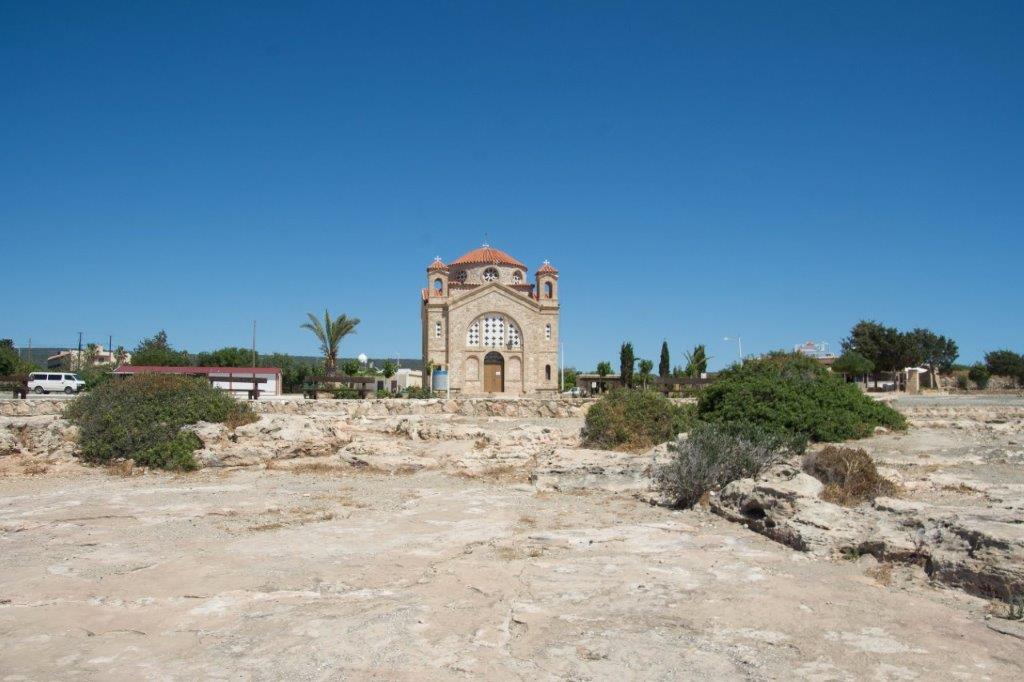
It appears that this is the destination, the end of the road, the area that everyone has come to visit.
And yet the road doesn’t end at the church. It continues, disappearing out of sight over the brow of the hill. It leads to a coastal area with rock pools, a small harbour and a tiny beach.
You’d be forgiven for thinking it doesn’t seem overly special. But take a closer look!
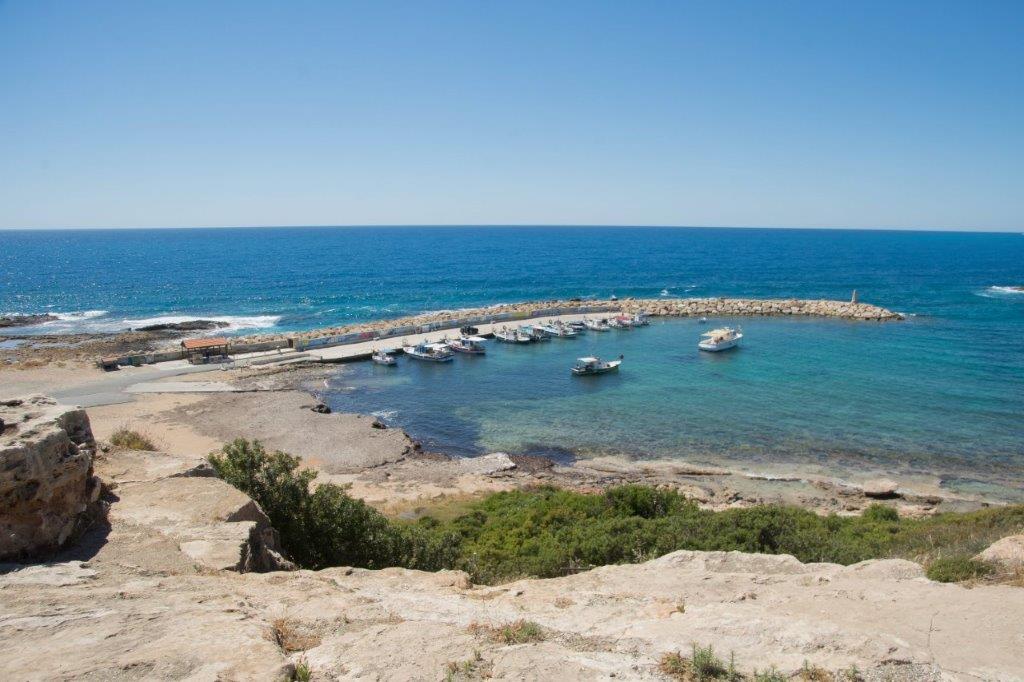
Look behind you, back the way you came. There, staring back at you from the cliff face are the numerous gaping mouths of ancient tombs. This was what I’d come to see!
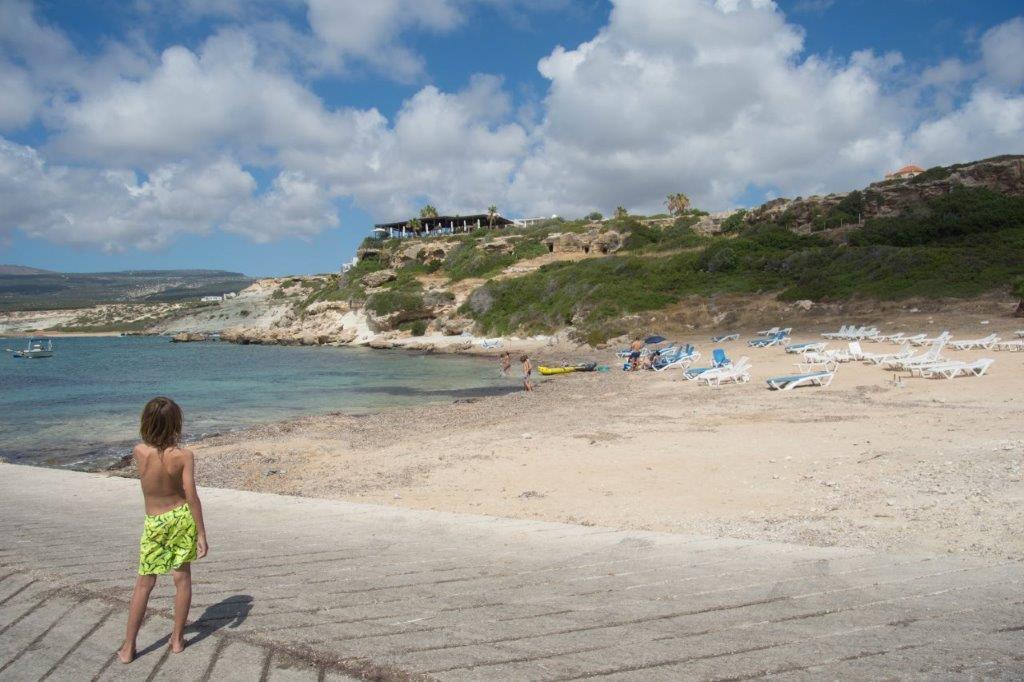
Before exploring, we had a picnic in the shade of a rocky overhand on the far side of the beach. It was here that Goobie discovered Cape Drepanum’s potential for rock-pooling. Goobie loves rock-pooling and Herc joined in too. They quickly found hermit crabs, whelks and small fish. Take care, though. The rocks can be very slippery in places, so sea shoes are a must.
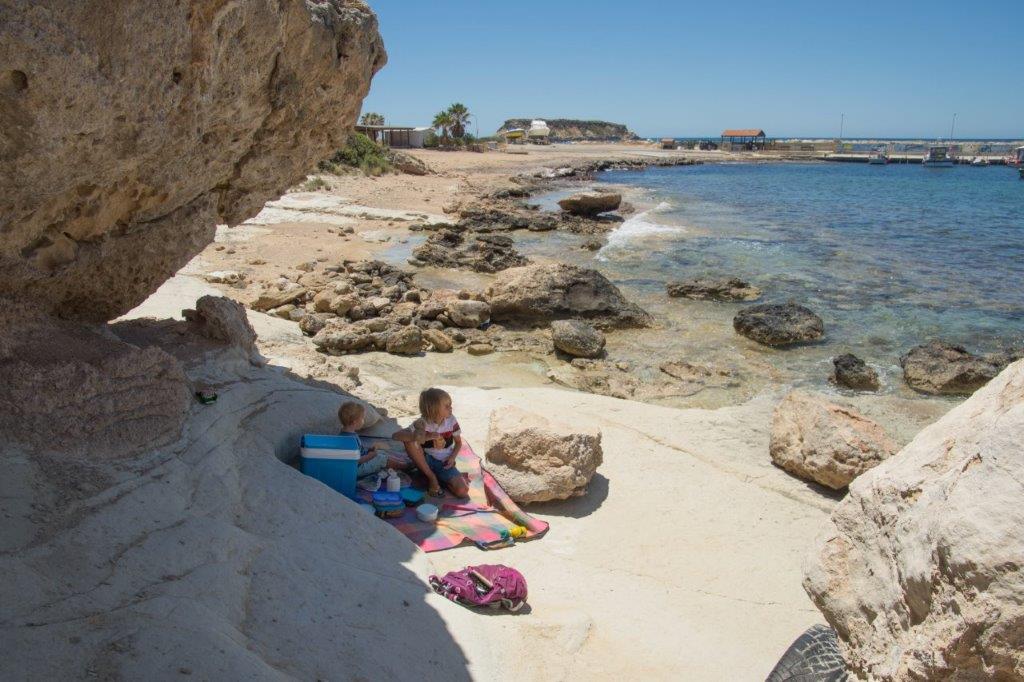
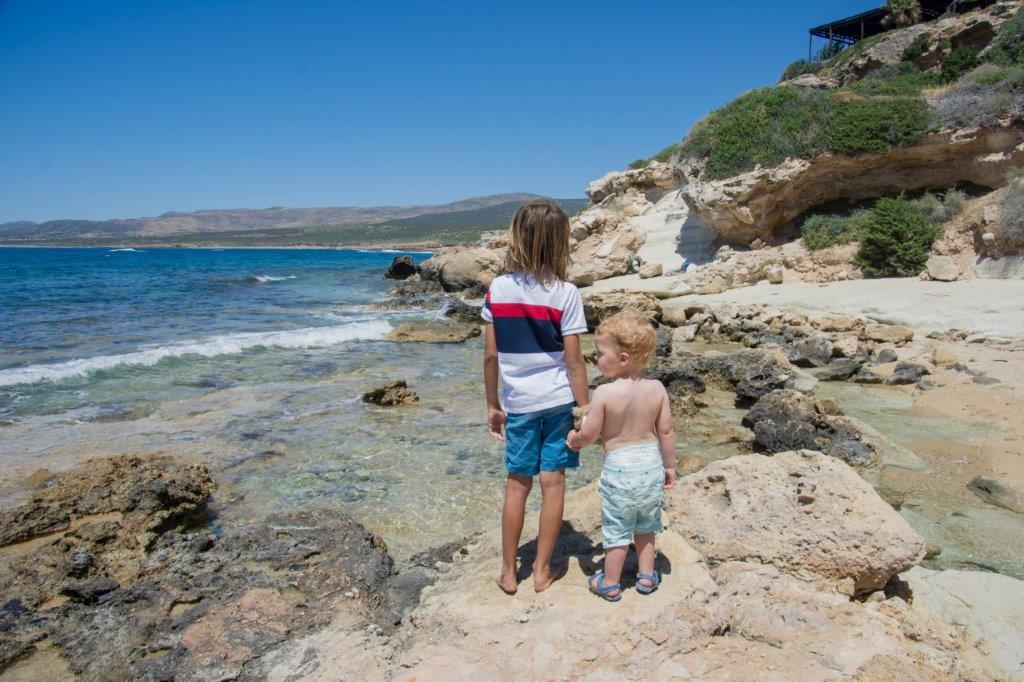
North of our picnic spot we discovered more rocks that were great for scrambling over. They also led to the first tomb that was staring invitingly at me from beneath the restaurant on the top of the cliff. I thought the rocks were too challenging for two year-old Herc but Goobie vehemently defended his brother’s climbing prowess.
‘I know what my brother is capable of and he can do it!!’
And he was right.
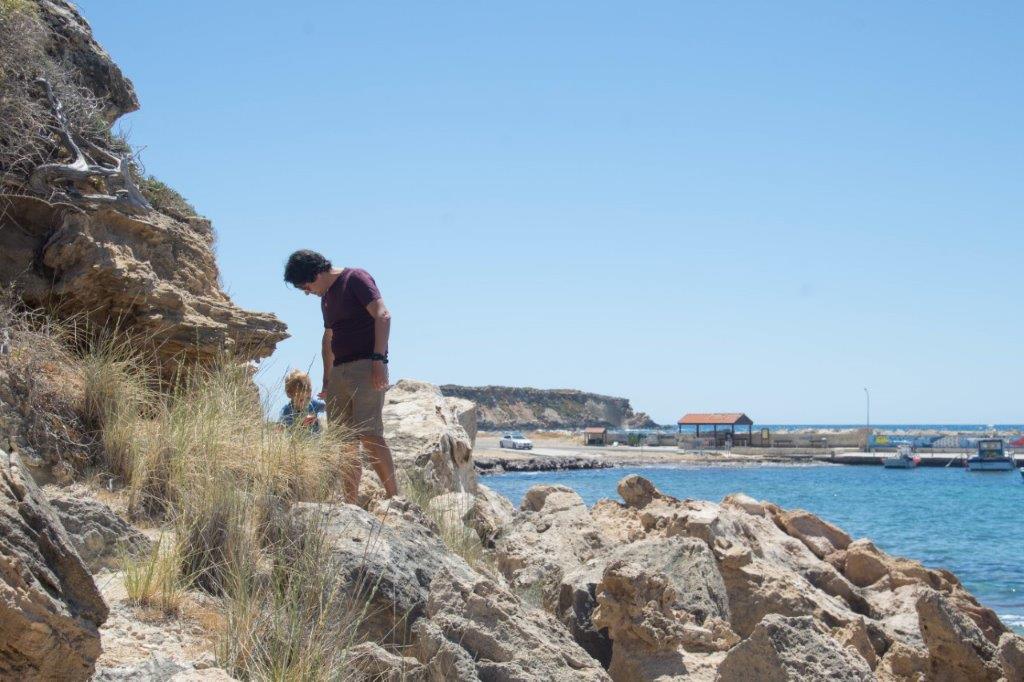
It was fun climbing over the rocks, finding hidden nooks and crannies. It reminded us of Crete a couple of years ago.
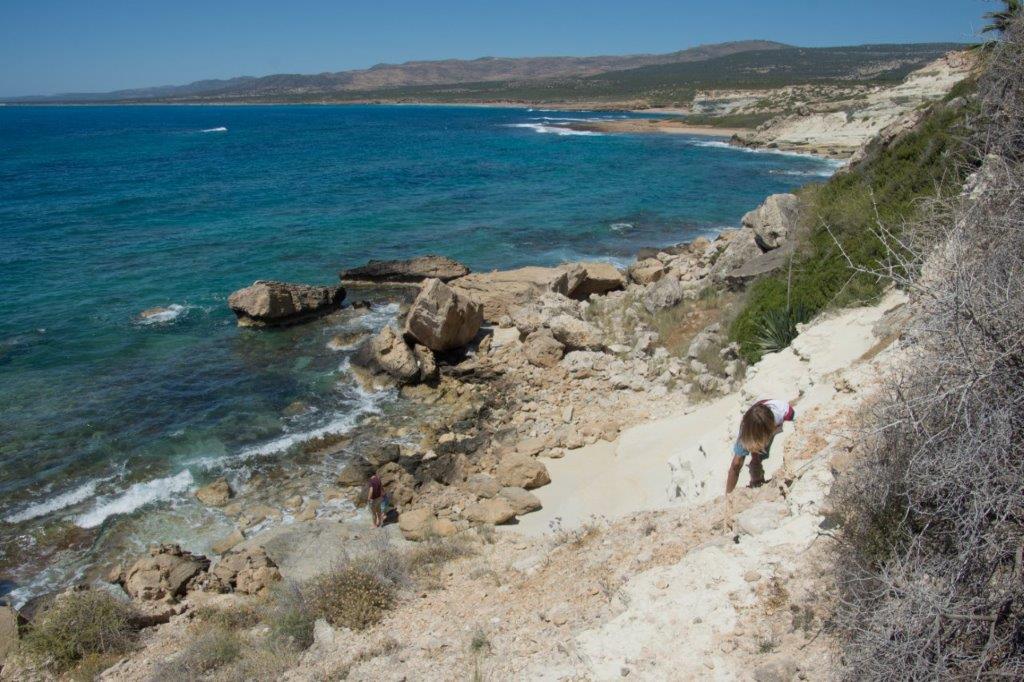
There’s a phrase in our house called being ‘tombed-out’ – which means sick of being dragged around the island exploring tombs by your mother/wife.
‘I’ve been tombed-out for my entire life,’ said Goobie. The bum.
So I scooted up the cliff side on my own to reach the first tomb. I discovered that access was totally blocked by thick bush. It was so thick, you could have trodden on a curled-up viper without even seeing it. I’d have attempted it if I was wearing wellies but not in flip-flops.
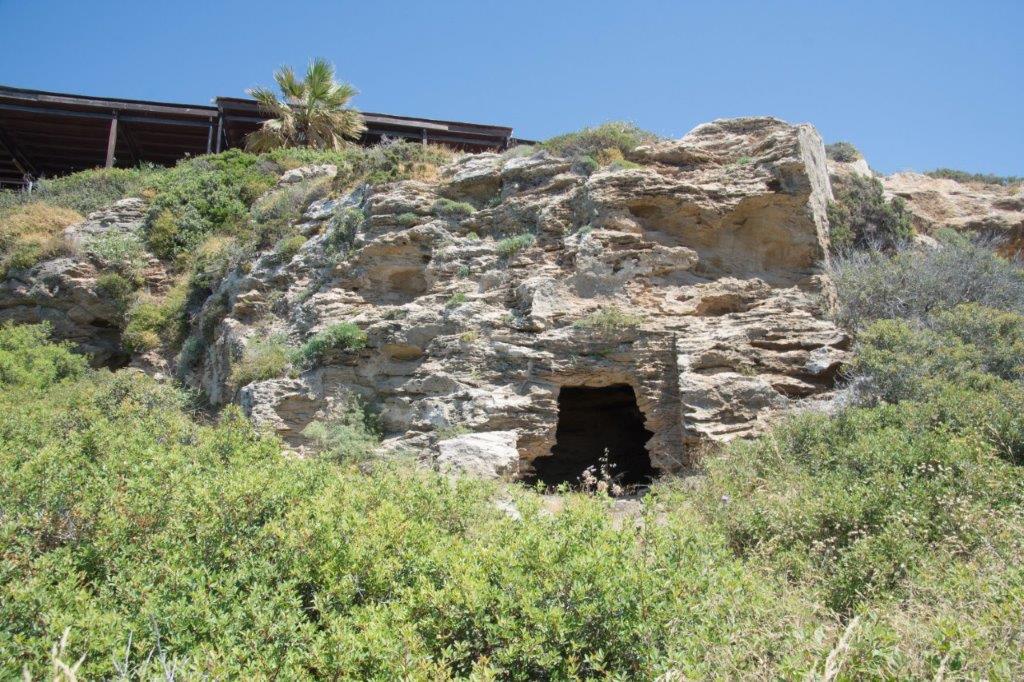
But no worries, there were plenty more tombs to explore. I scrambled back the way I’d come and climbed up to the next cluster of tombs while everyone else enjoyed rock-pooling.
These tombs were encircled by an old chain-link fence. I hopped over a squashed bit and began to explore, wading through tall, yellow grass to reach each tomb.
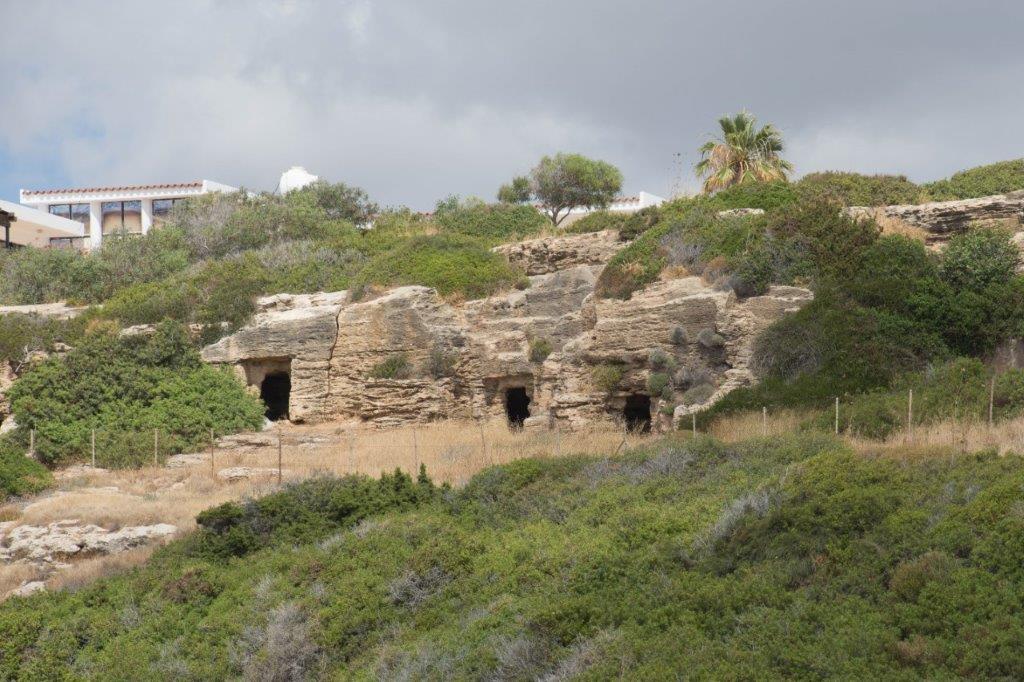
These tombs were similar to ones I’ve seen elsewhere on the island, with alcoves in the walls to lay the dead. After the hot climb to reach them, the dank interior was blissfully refreshing.
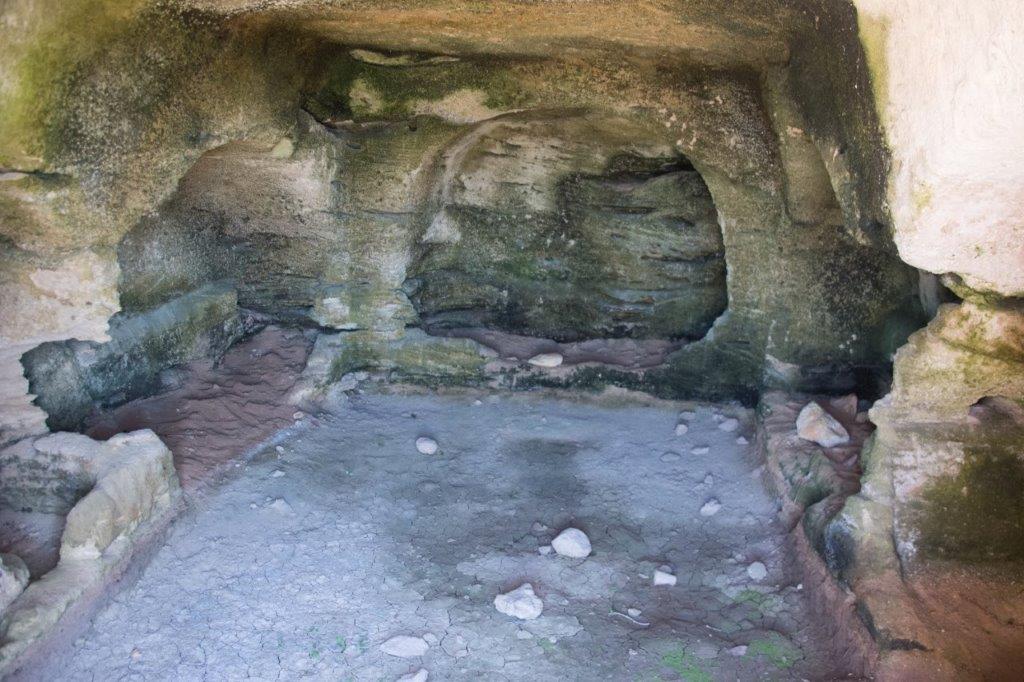
Many of the tombs were similar, though at the south end of this cluster there were some pretty large ones, stretching some way into the cliff. These had small rooms off to the side. And they smelled of marijuana.
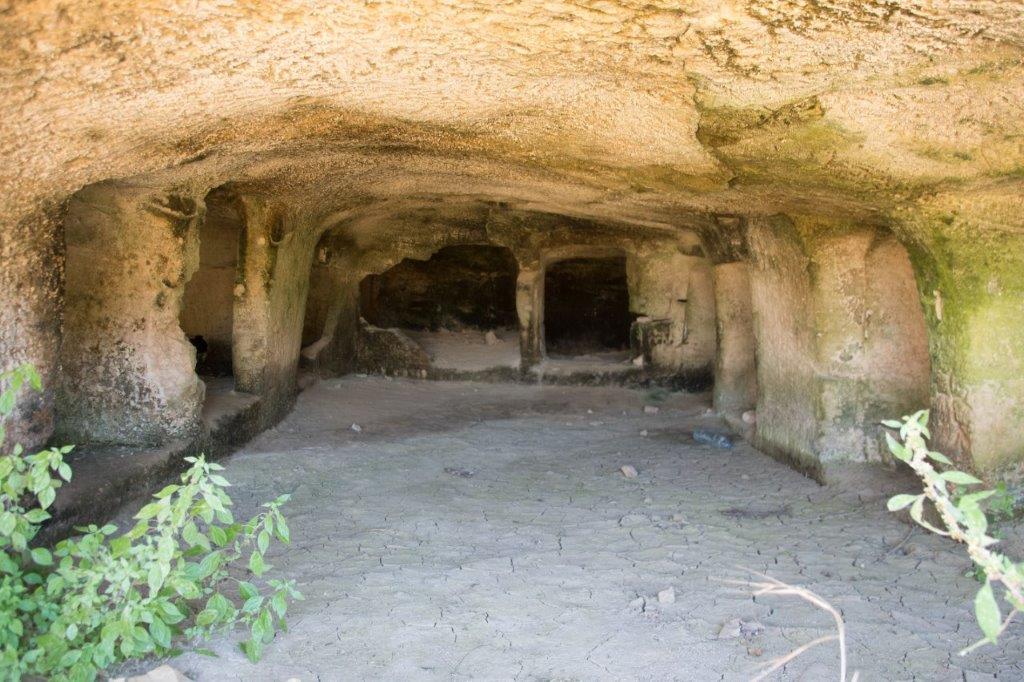
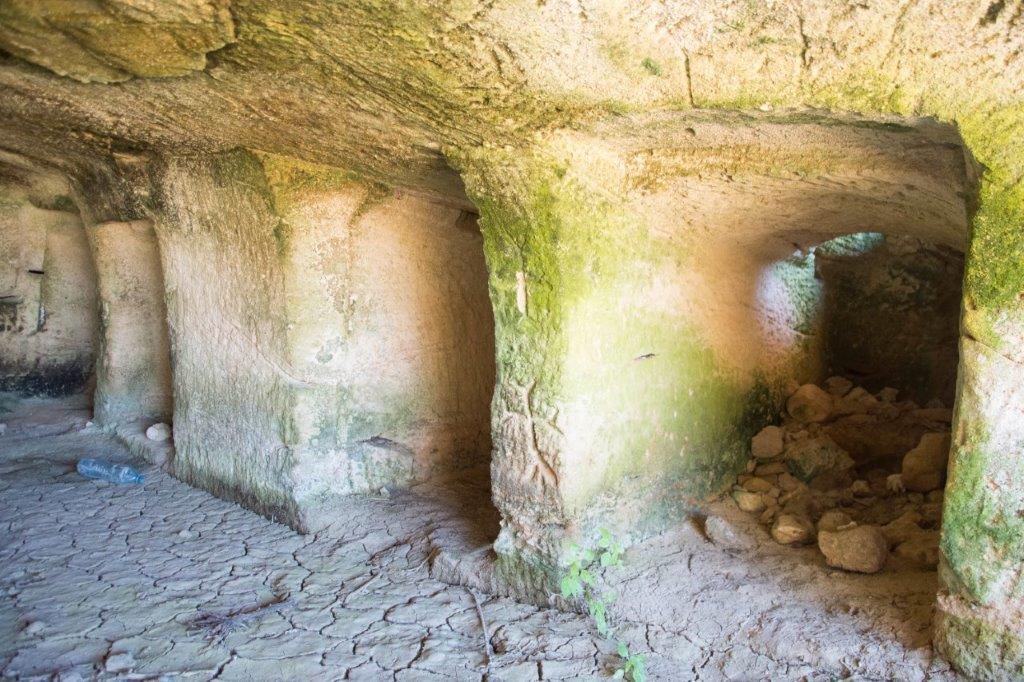
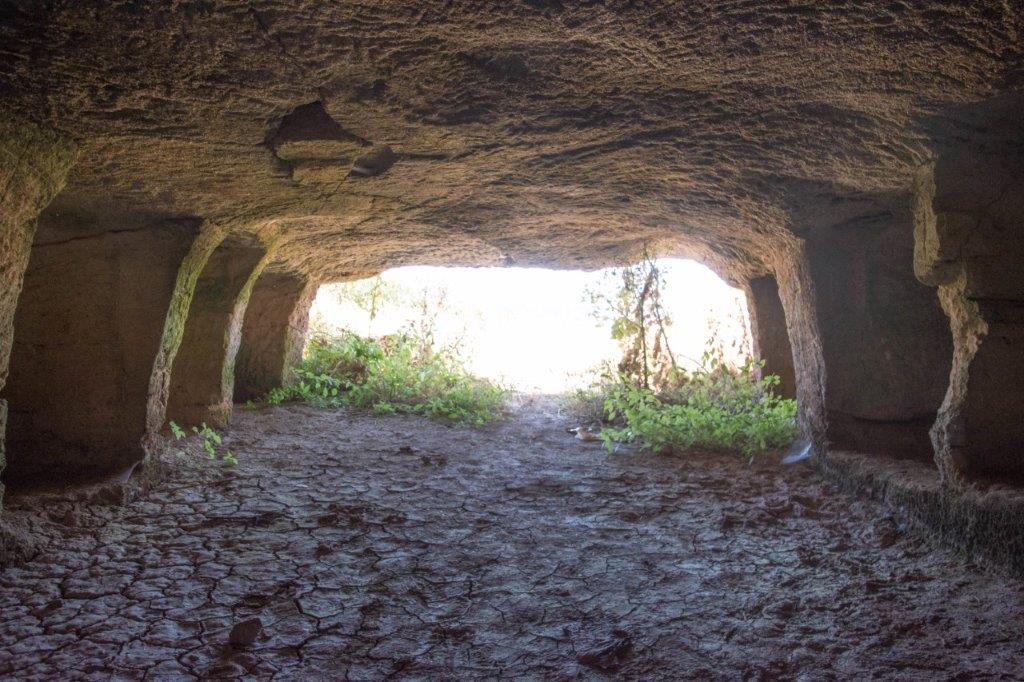
Next to these large tombs, I noticed an open metal gate and steps cut out of the rock, leading up to Agios Georgios at the top of the cliffs. So no need for climbing cliff sides like I did. You will find the steps at the very edge of the cliff, behind the modern church.
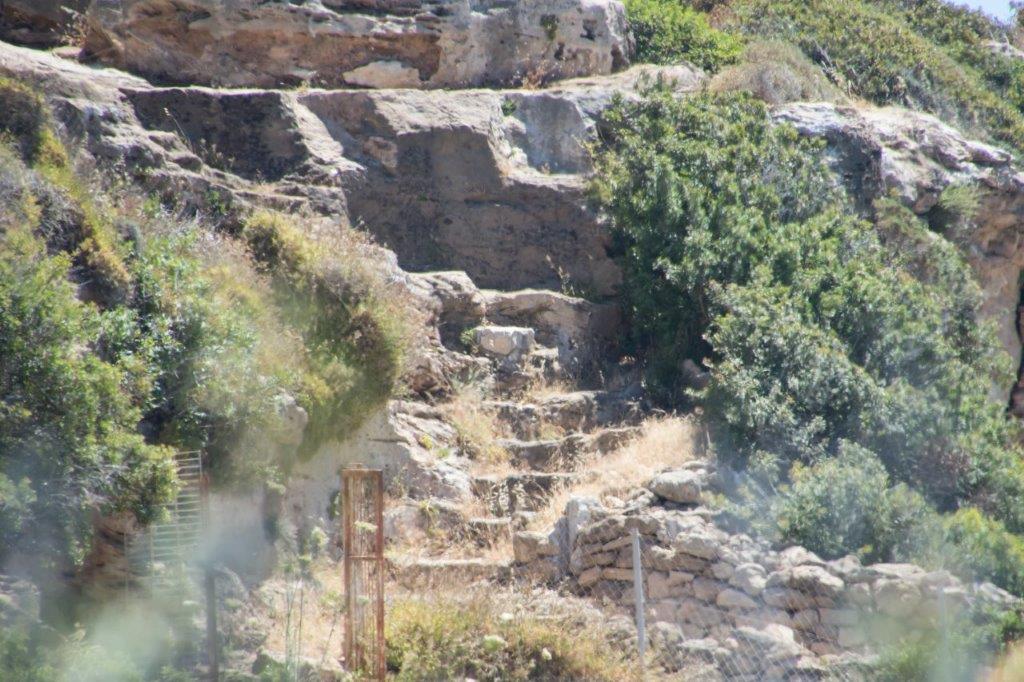
To the south of these steps are some tombs that look different from the others. Each have what looks like a small dromos leading to the entrance. Perhaps these were built at a different time.
Inside were holes in the floor, revealing tombs beneath.
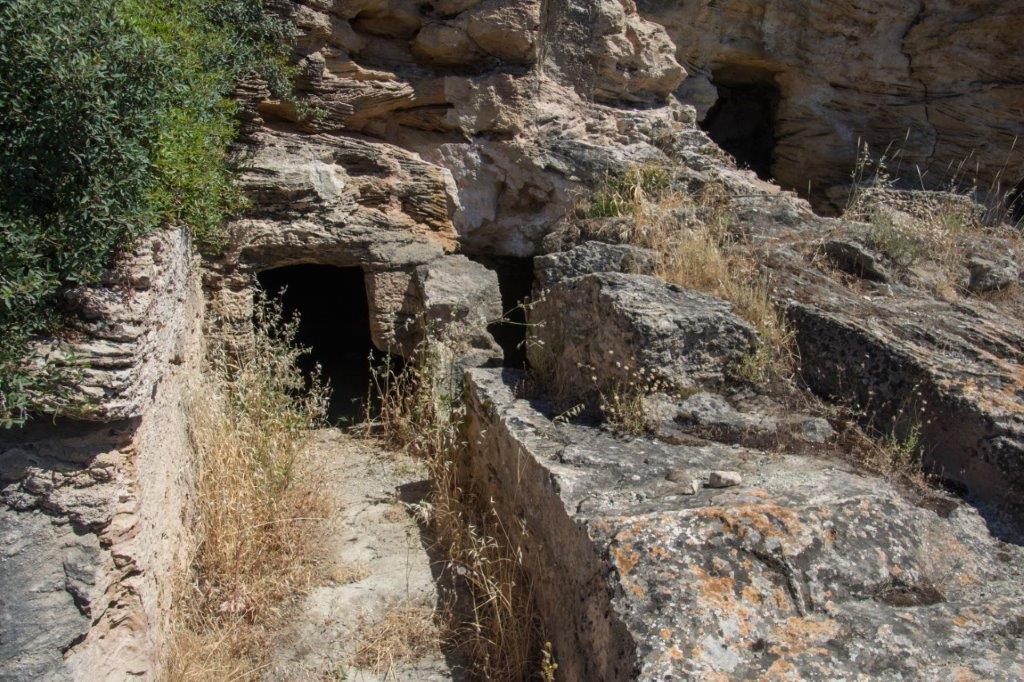
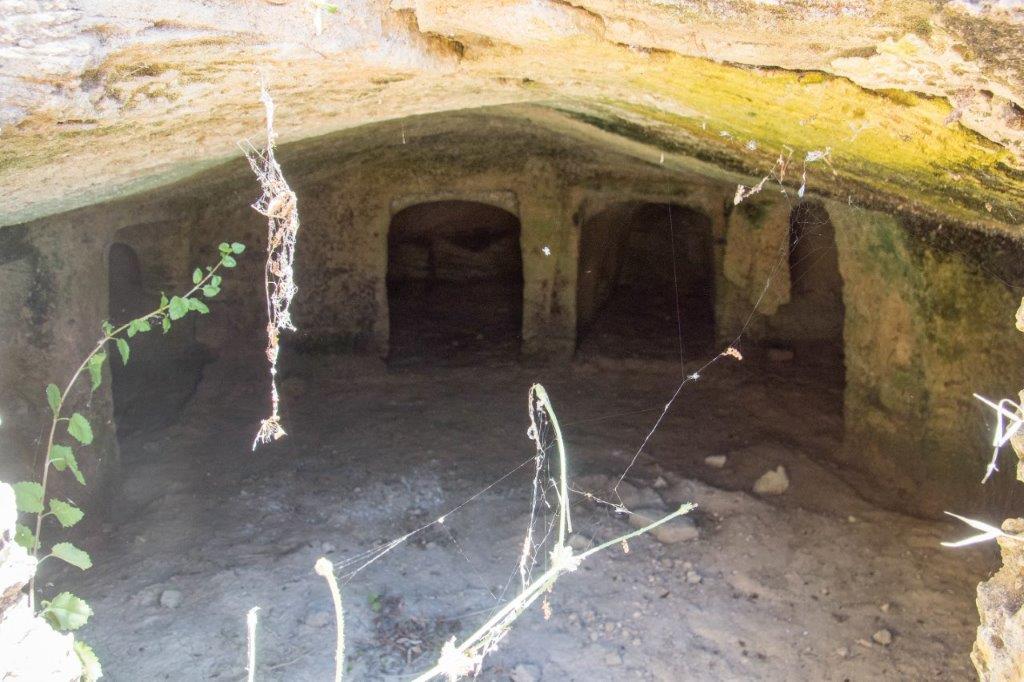
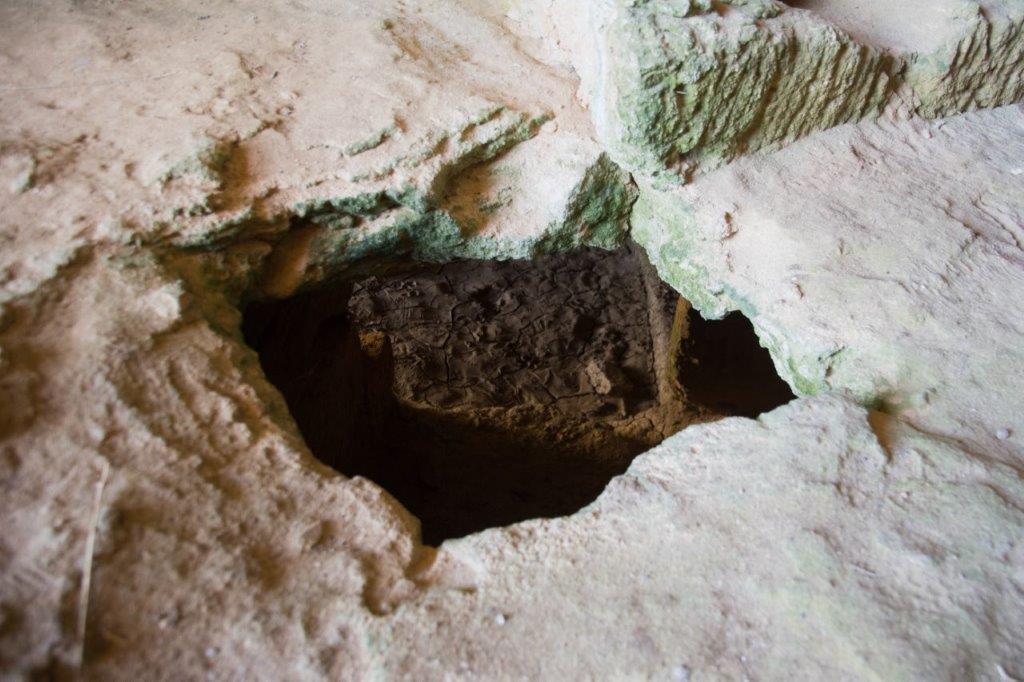
I headed back down the cliff to find my family. They’d been rock-pooling for a while and so I actually managed to persuade Goobie to explore the final cluster of tombs with me.
This final cluster were to the south of the cliffs and they looked far older. Some were massive. They had all been eroded so badly we weren’t sure whether they were tombs in natural caves or whether they’d originally been dug out of the cliff like the tombs in the fenced area. These tombs weren’t fenced and were much easier to get to.
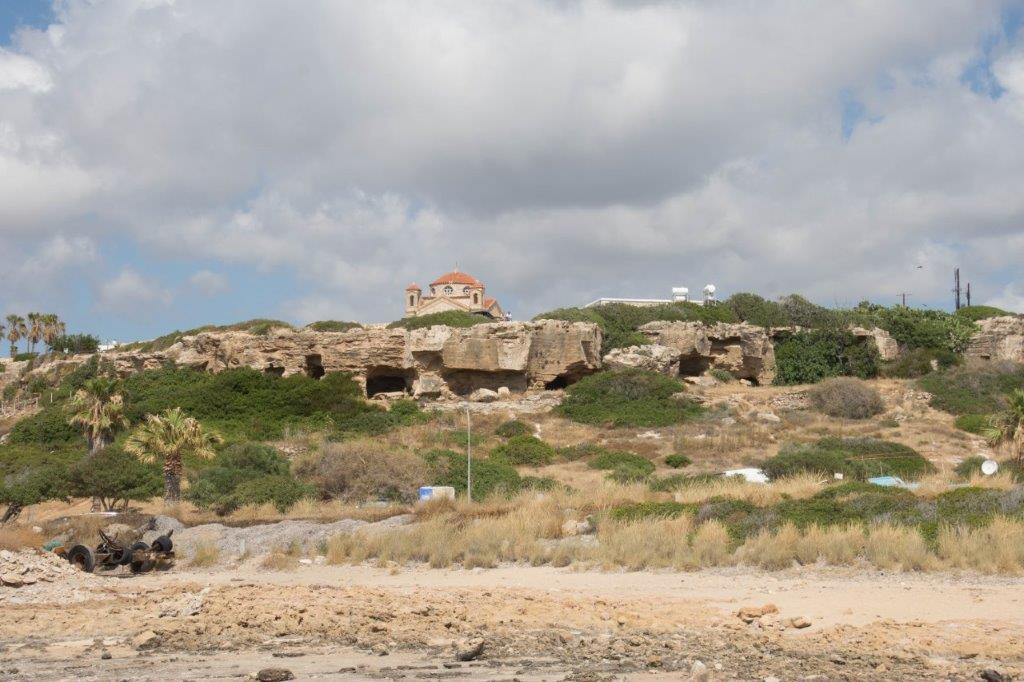
They had arched alcoves and pits in the floor.
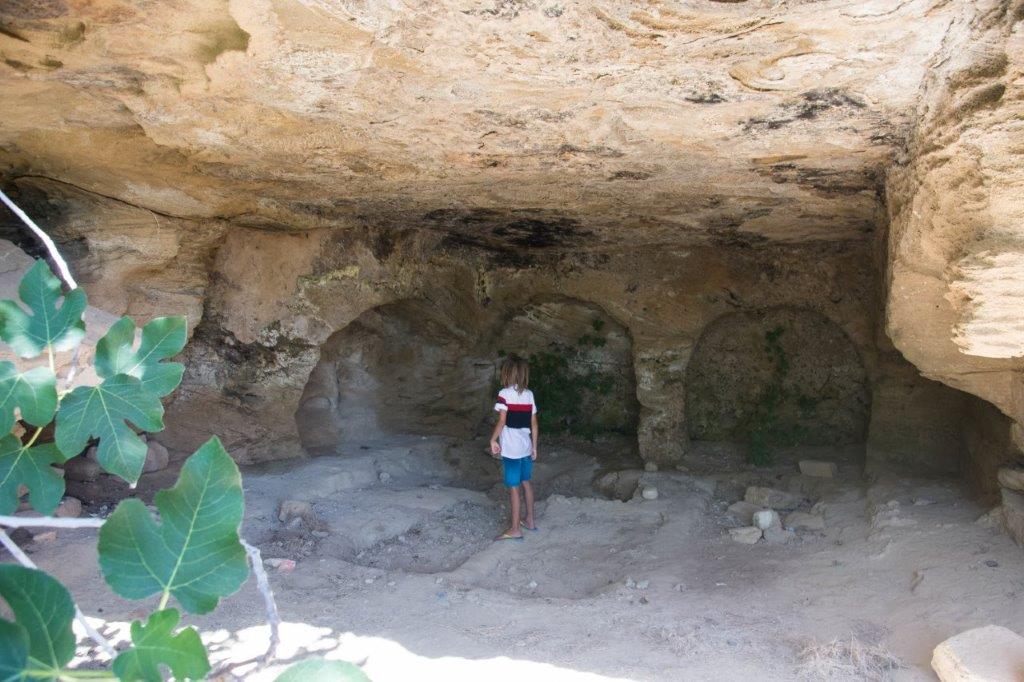
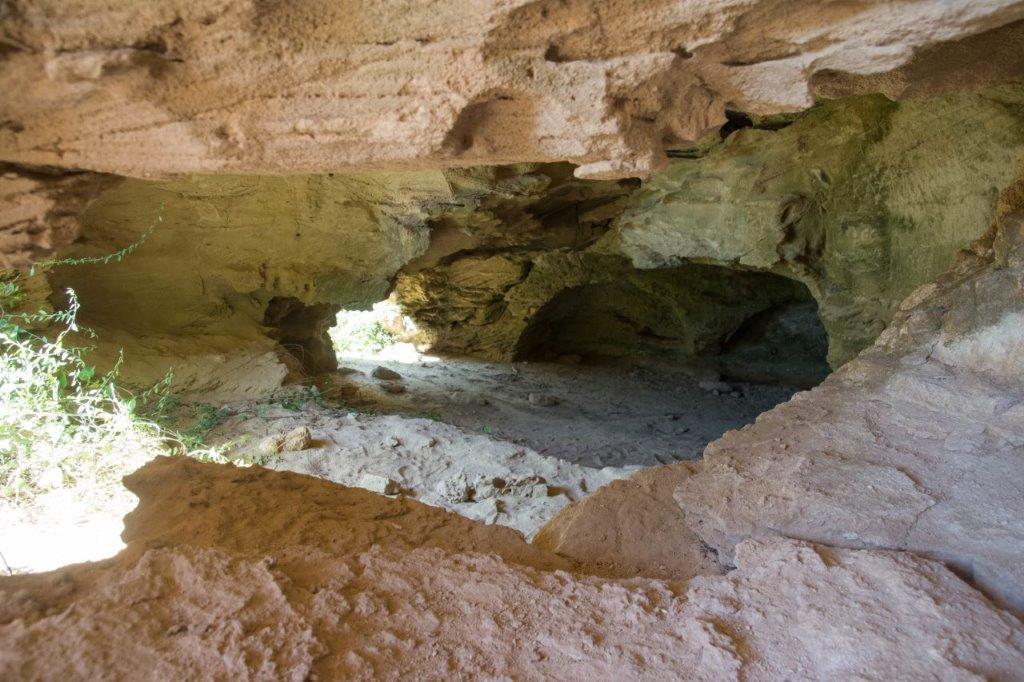
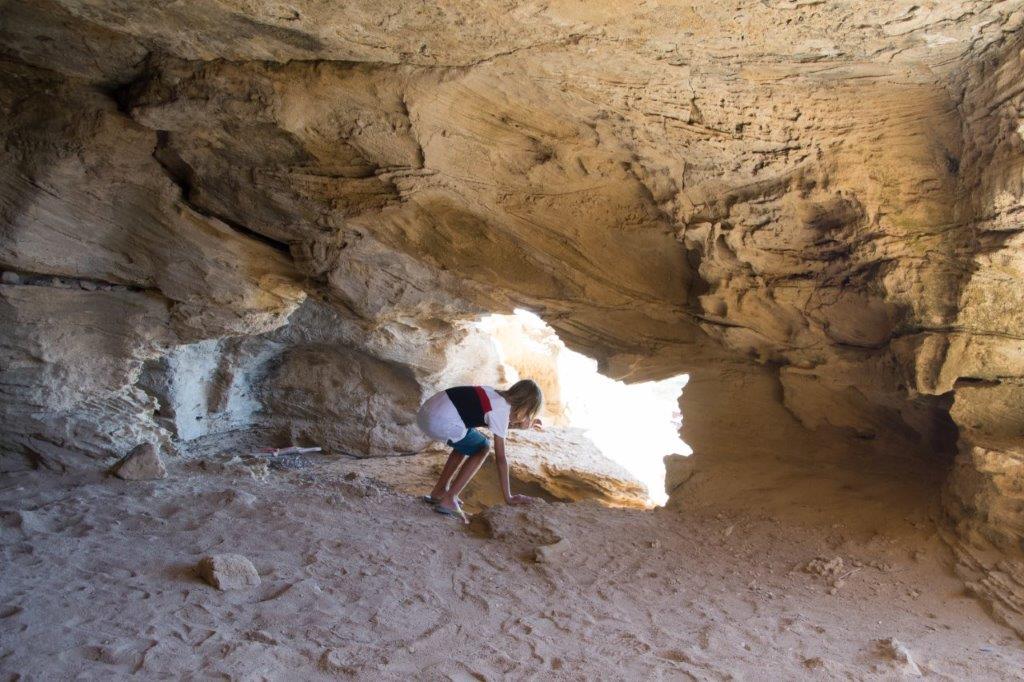
Who had built them? Archaeologists believe there was once an ancient Roman settlement on this site, around the time of Justinian I, 527-565 AD. Ships transporting grain stopped here on their way from Alexandria in Egypt to Constantinople in Turkey. At the centre of this settlement the Romans had built the basilicas that are in the archaeological park at the top of the hill. We were exploring their necropolis.
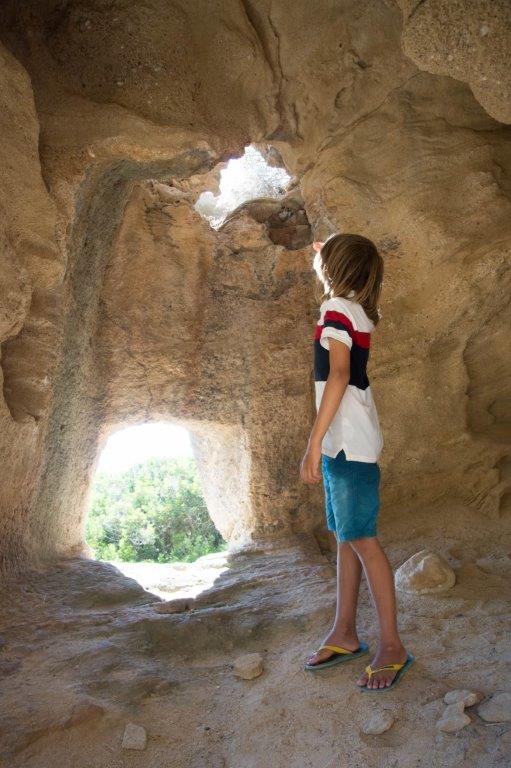
And that was it for our first visit. We had to head back to Matt and Herc waiting by the car at the foot of the cliffs. But as we looked out across the southern coastline of Cape Drepanum, I knew we’d be back to complete our exploration.
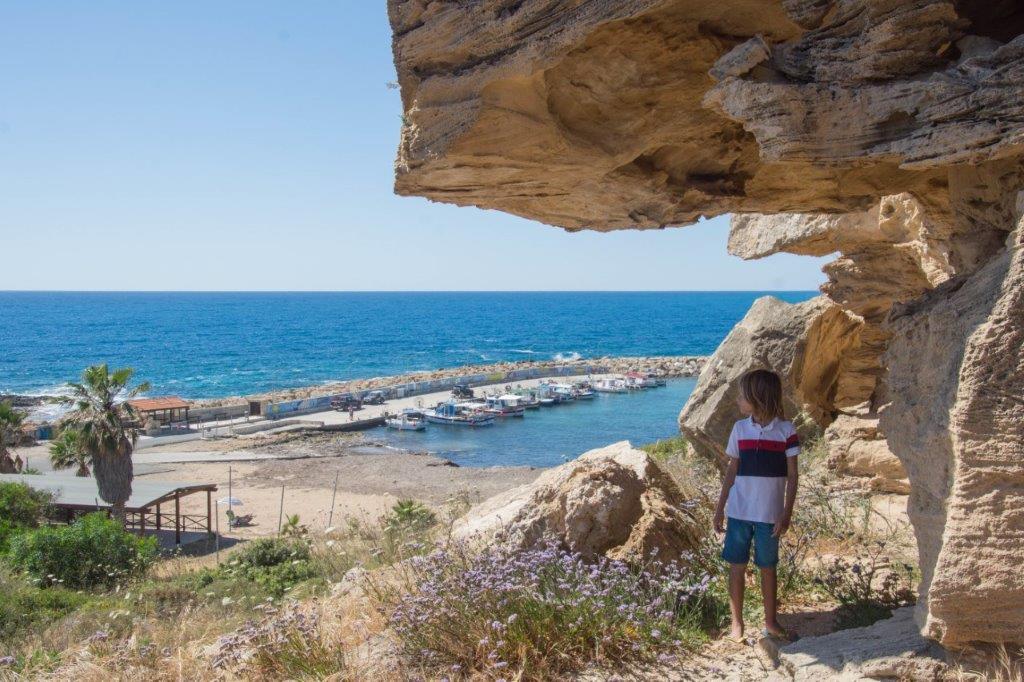
Three weeks later, we were back again. We started with the massive expanse of rock pools just the other side of the harbour. We hopped over razor-sharp rocks and looked for signs of life in the pockets of water. Pretty soon, Goobie spotted fish and hermit crabs.
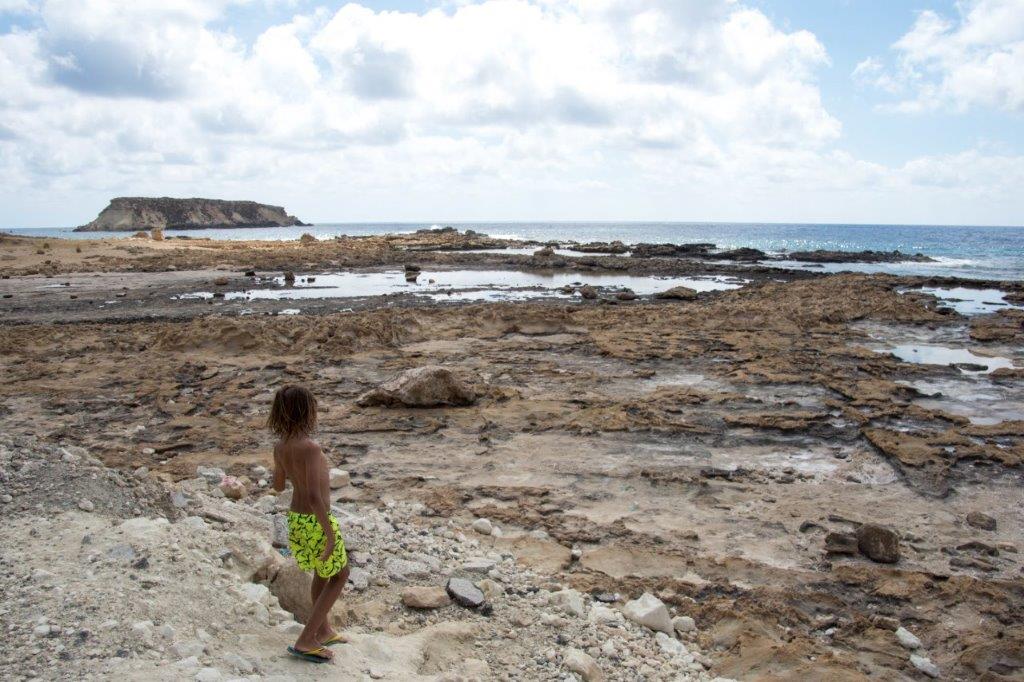
As we walked closer to the sea, this place felt like an alien landscape. Dark rocks, mini waterfalls, weird-shaped stones and terracotta beneath the water. There was a strange energy here. Unique.
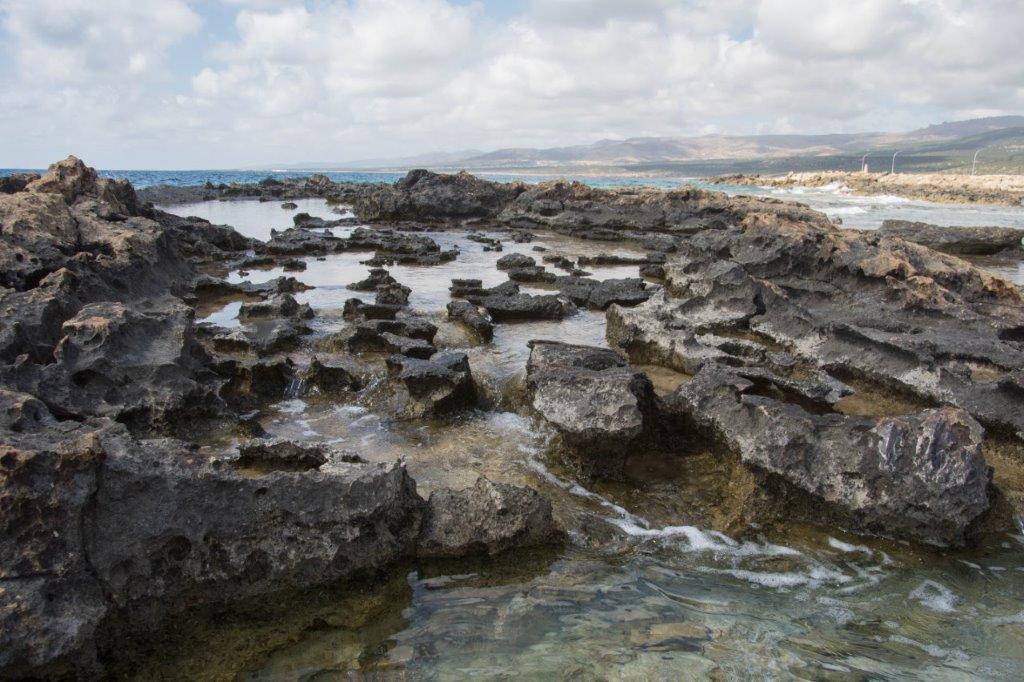
At the centre of this area is a huge pool that is different to all the surrounding pools for one reason – the water is as warm as a bath. At first we theorized that this was because the pool was further inland and not fed by constant cooler sea water. Goobie and Herc loved it.
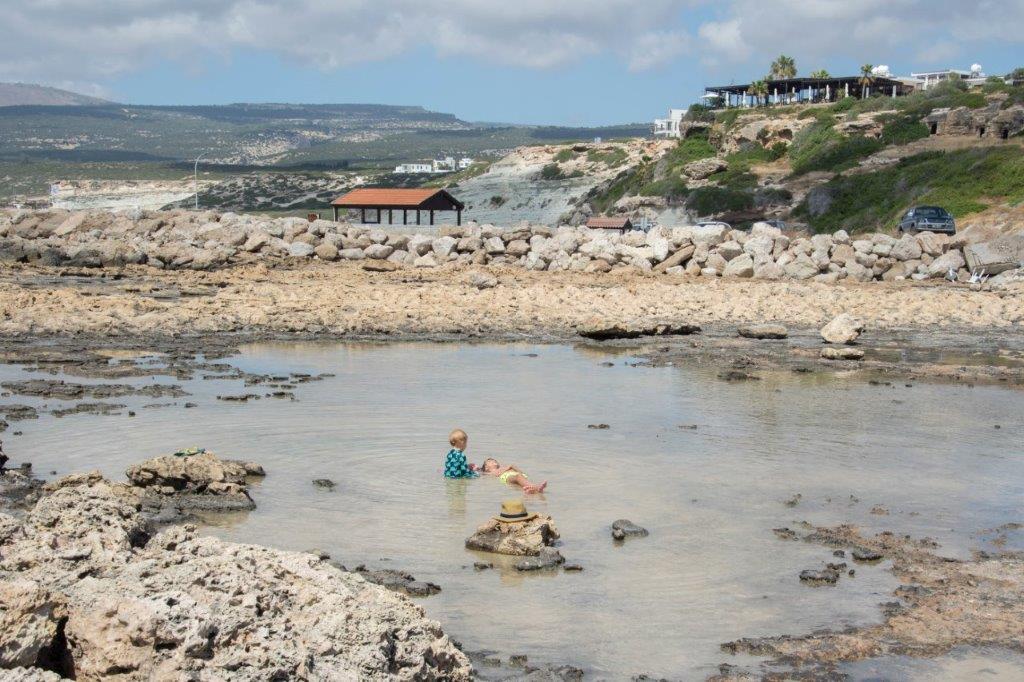
Then I unintentionally trod in a small indentation and had to quickly take my foot out. The water was hot, properly hot. Herc trod in one and it made him cry. How was it that the deeper pockets of water in this pool were hotter? Wouldn’t deeper water be cooler? We also noticed that there weren’t any fish in this pool.
I can’t verify this, but my hunch is that we were standing in a thermal pool, heated by springs that were sending hot water up from beneath. There are some thermal pools further along the coast, so it isn’t beyond the realms of possibility.
Once we’d learned to spot the hotter areas, we avoided these and Goobie and Herc continued to enjoy their bath.
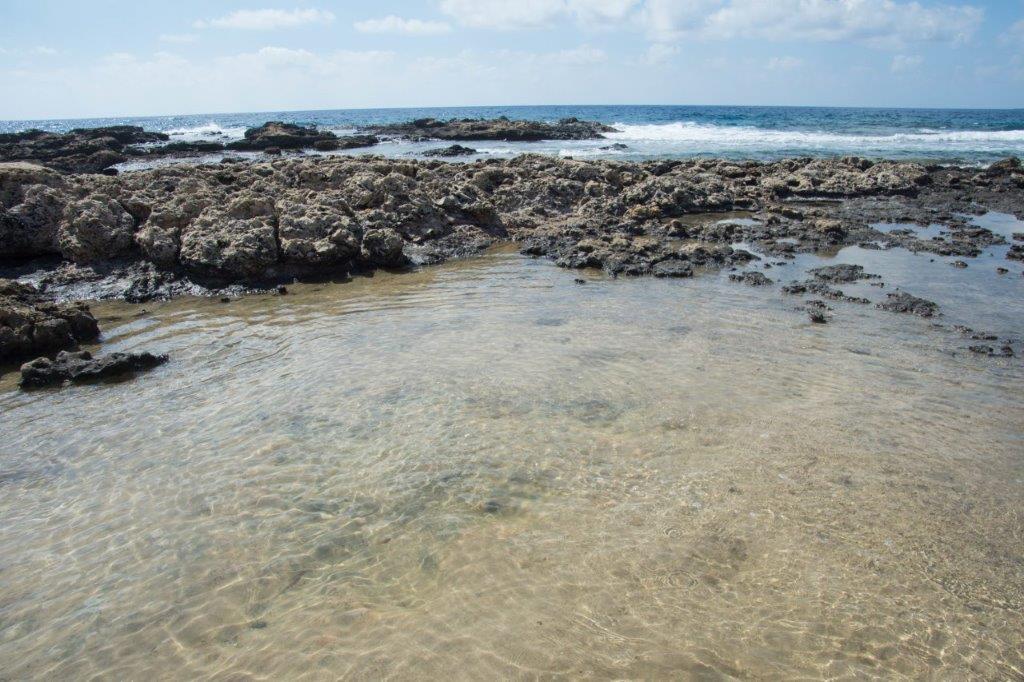
On to the final part of the Cape – the area to the south. From the road this just looks like a flat expanse of dusty earth, ending in a drop-off with some large rocks scattered in the sea. But as with the other areas of this Cape, don’t be put off by first impressions. Have a closer look.
We drove towards the drop-off and parked. We looked over the edge and saw this:
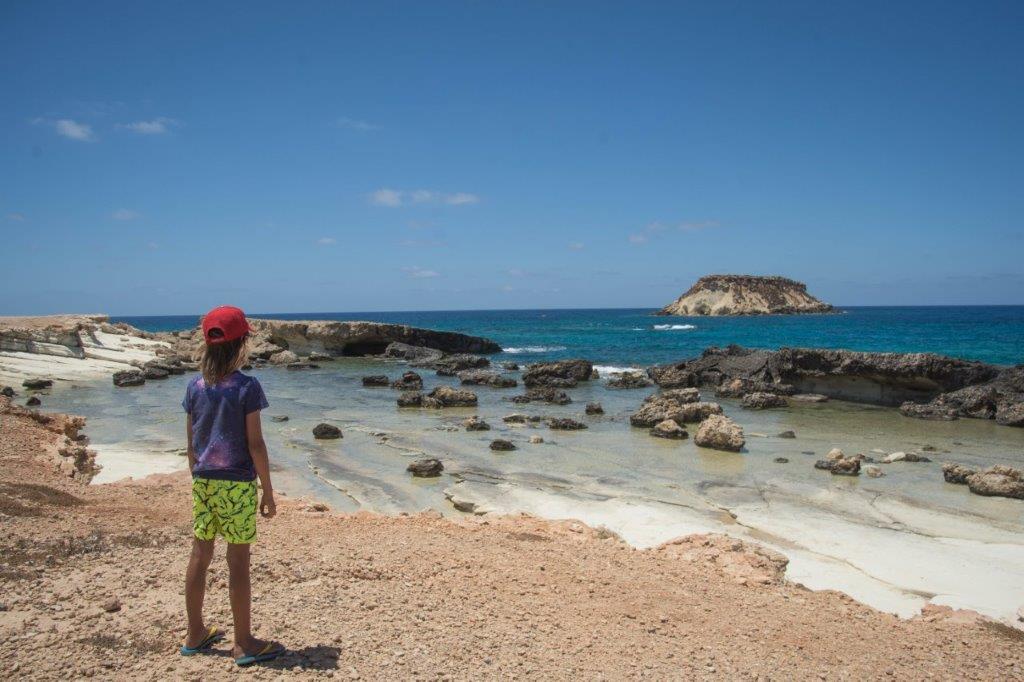
Nature had made a cove that was perfect for toddlers to play in! The drop-off wasn’t high and we easily climbed down. Beneath were smooth rocks and still water. We could barely get Goobie and Herc to eat some lunch before running in.
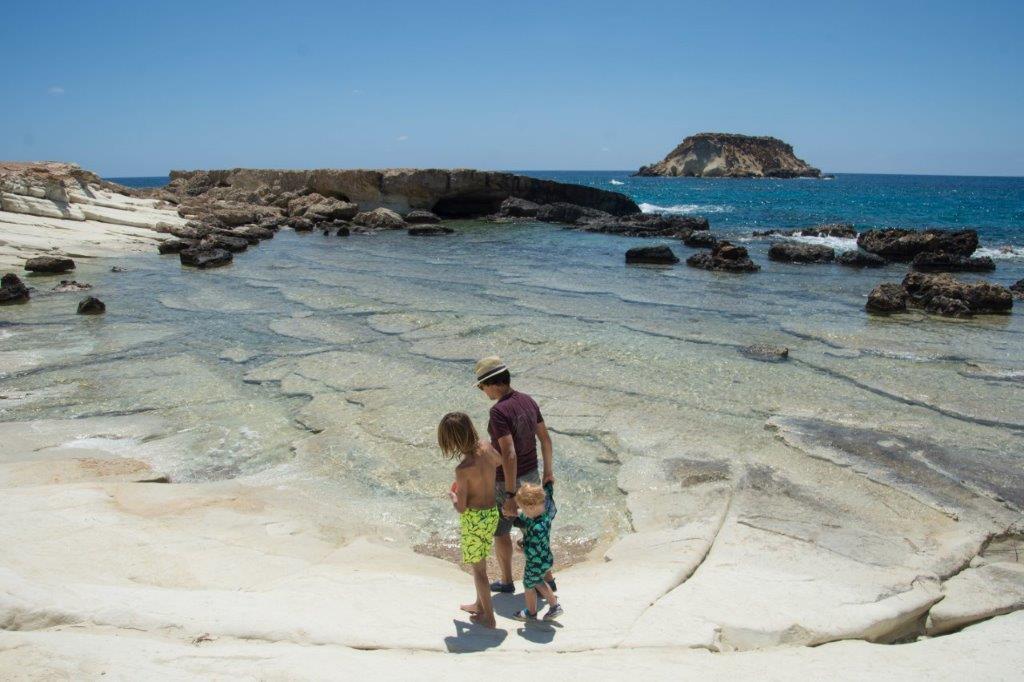
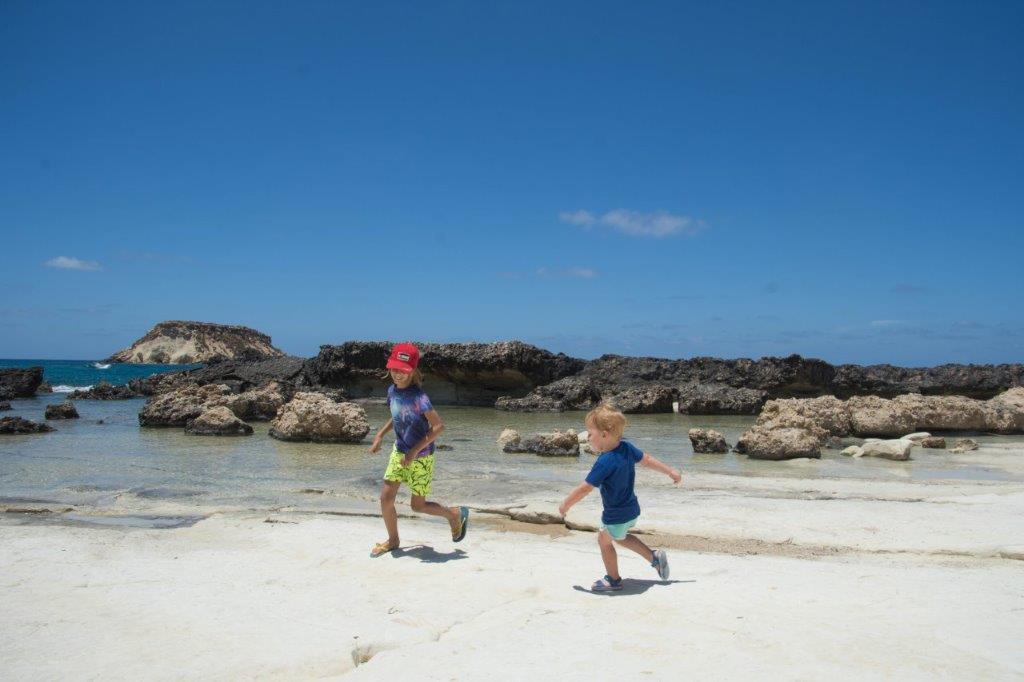
Finally, in they went, Yeronissos island watching over them.
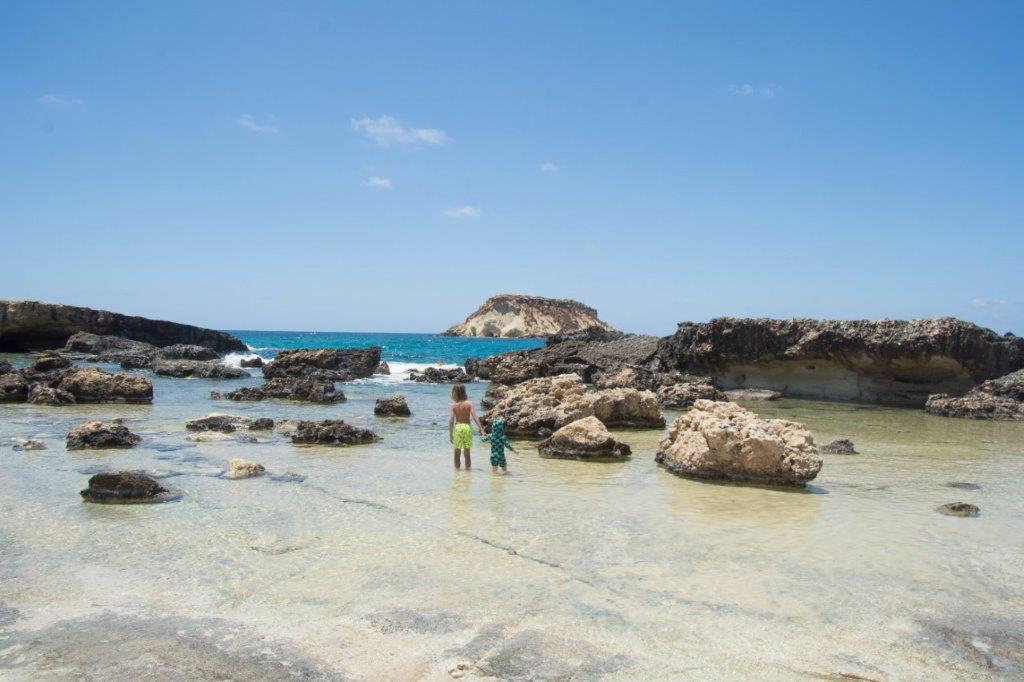
A word of caution here. While the water is shallow, the rocks are very slippery in places, so wear sea shoes. There are also natural channels cut into the sea bed which causes the depth to change suddenly. Not a problem for older children but toddlers need close supervision.
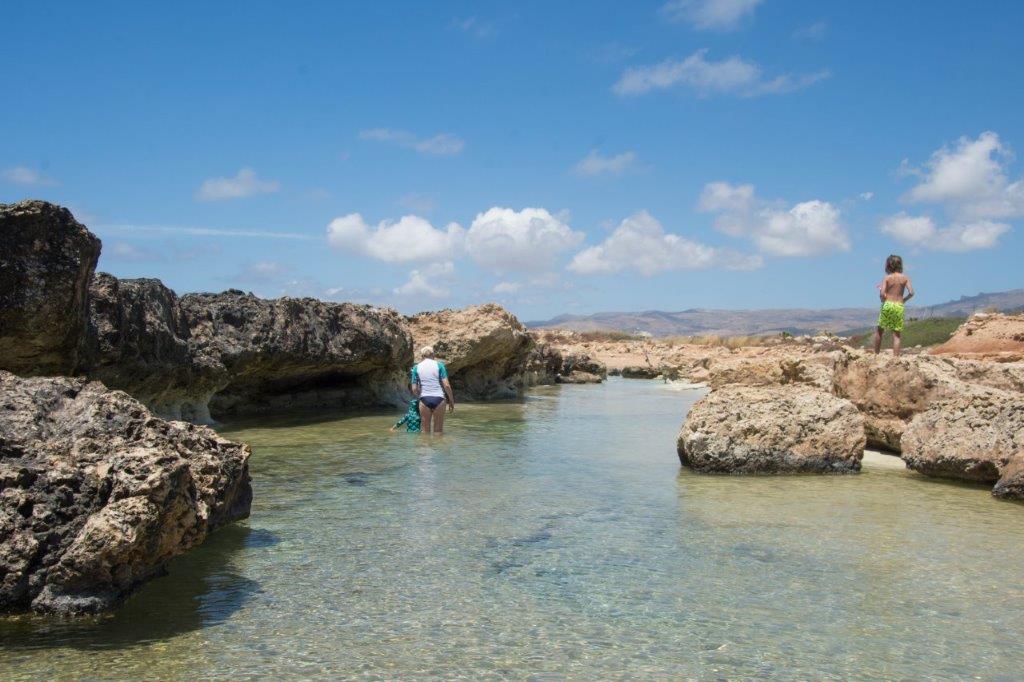
Goobie spotted lots of little fish and he and Herc enjoyed climbing rocks, exploring nooks and using the slippery rocks as a natural slide. They loved it!
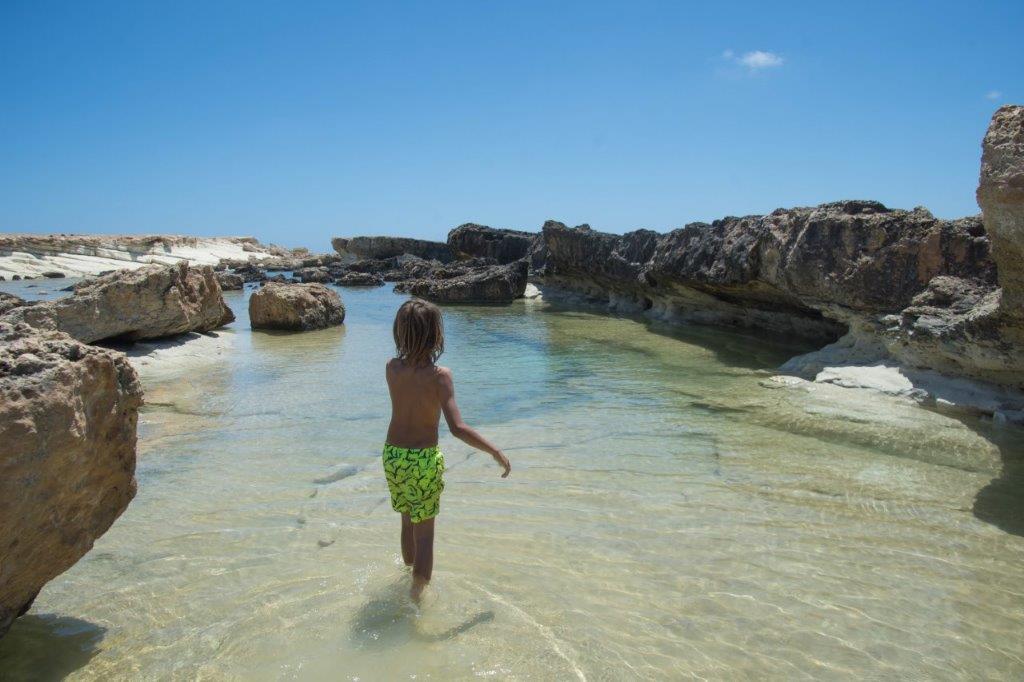
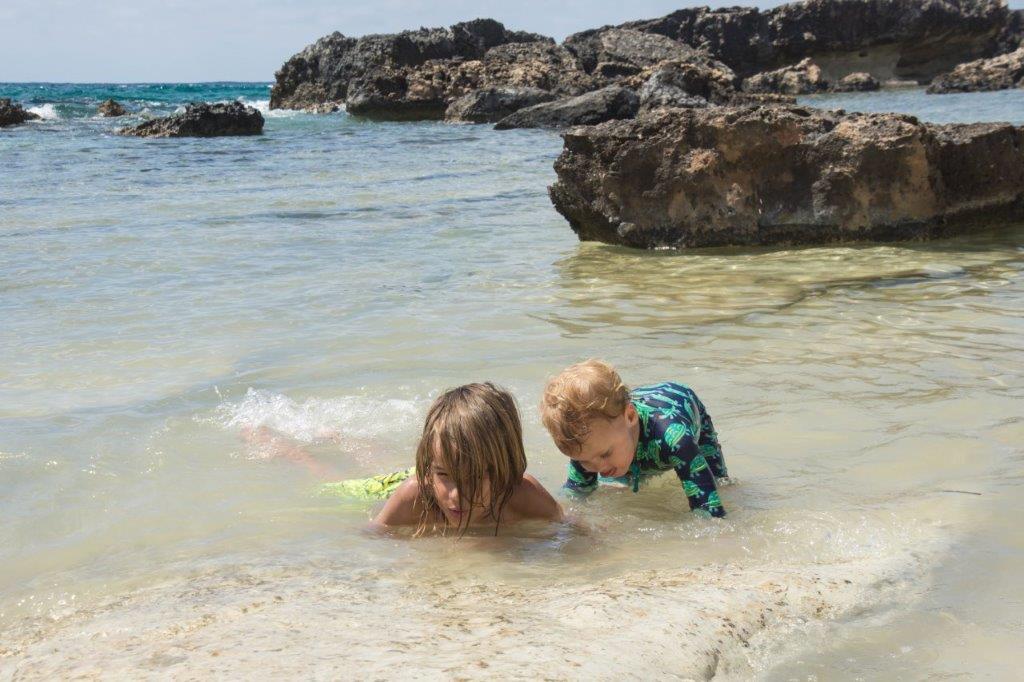
Suddenly I noticed a darker part of the rock at the far end. Could it be the entrance to a cave? I ran off to have a look.
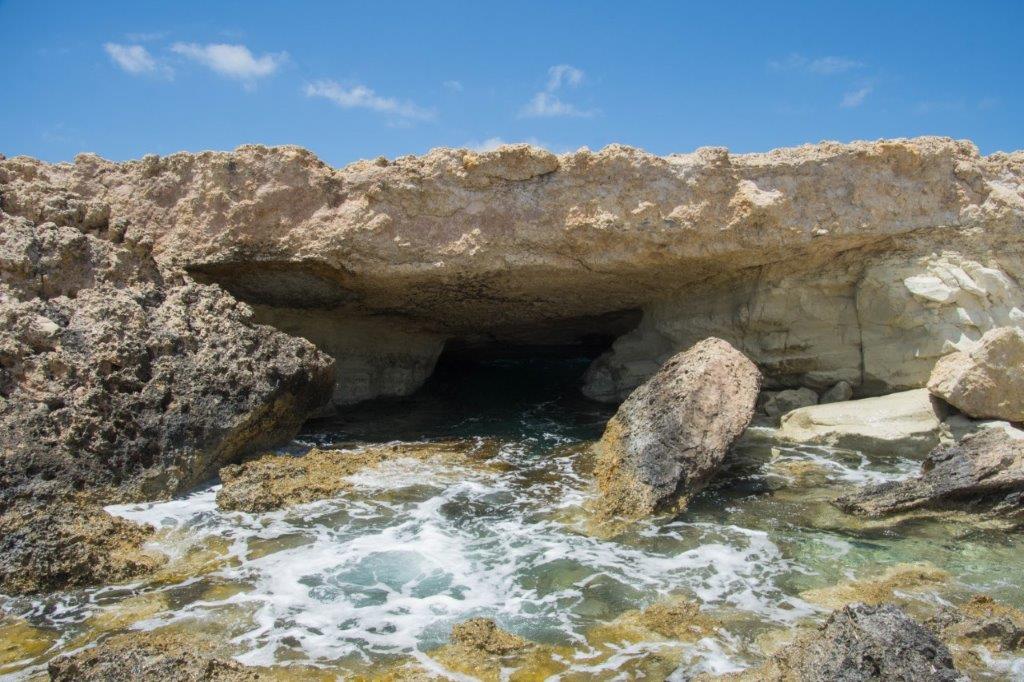
Yes! It was a sea cave! But there was more to this than met the eye.
I waded in – and saw that I was in a fabulous sea cave complex, complete with numerous chambers, skylights, windows, nooks and crannies. AWESOME!!
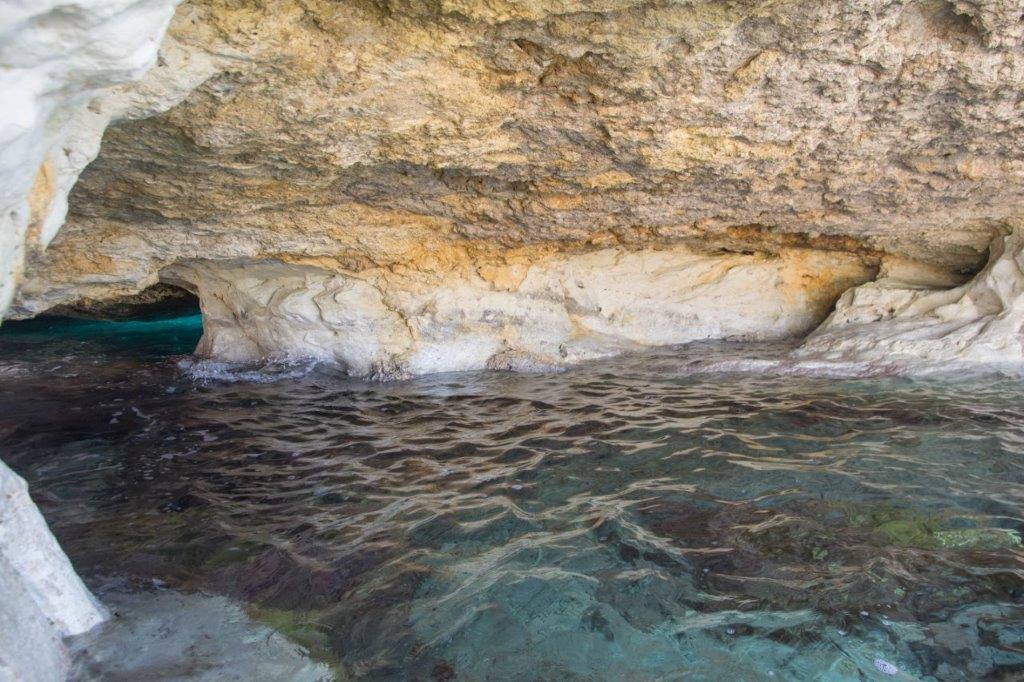
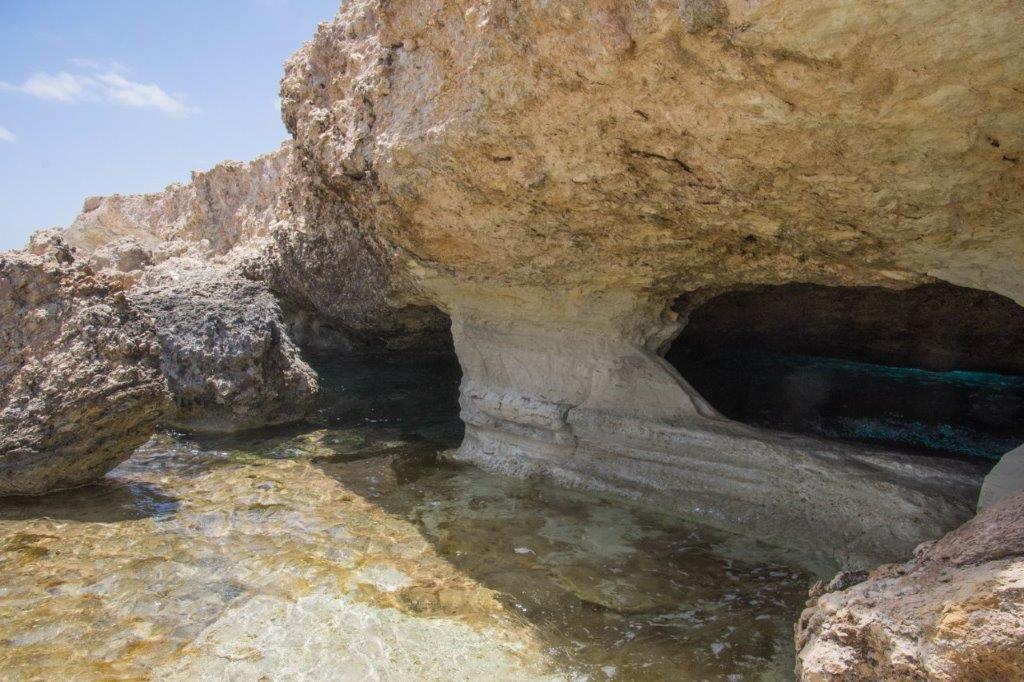
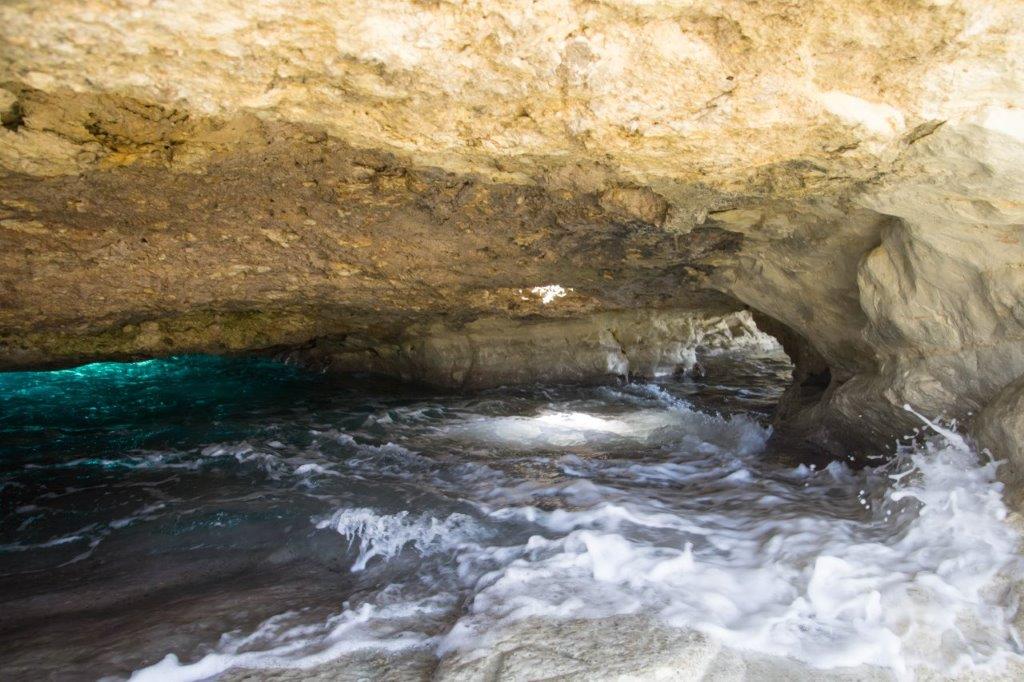
The cave was a bit intimidating, actually. Waves exploded out of a cave window. I imagined getting pulled in and being sucked into an underwater exit on the opposite side. Eek!
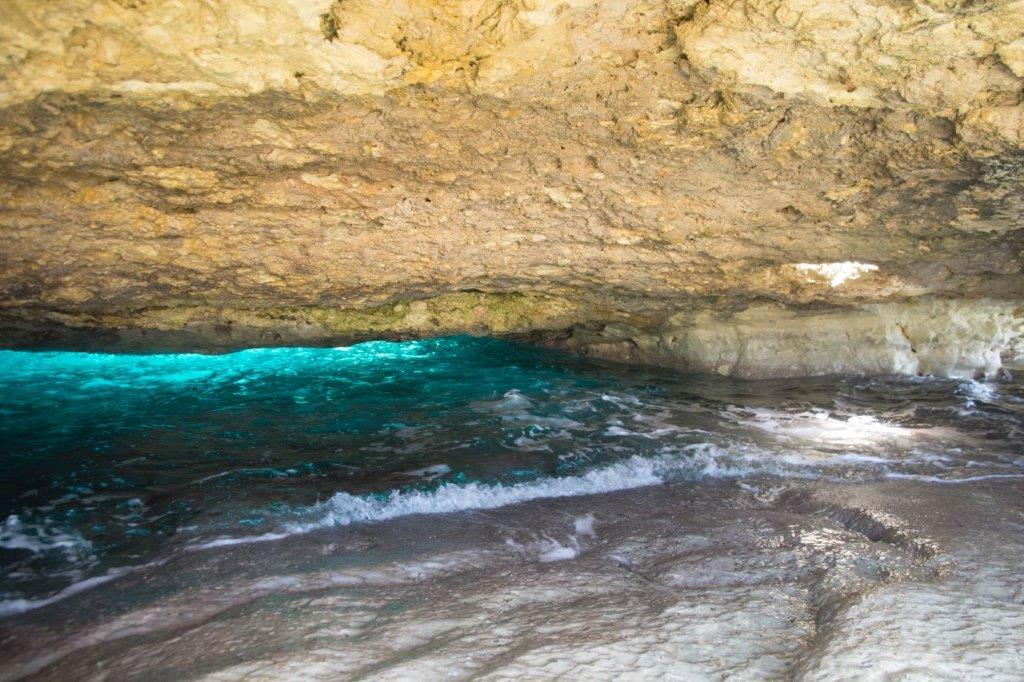
Further along was a natural stone arch. Hard to photograph with all the boulders in the way.
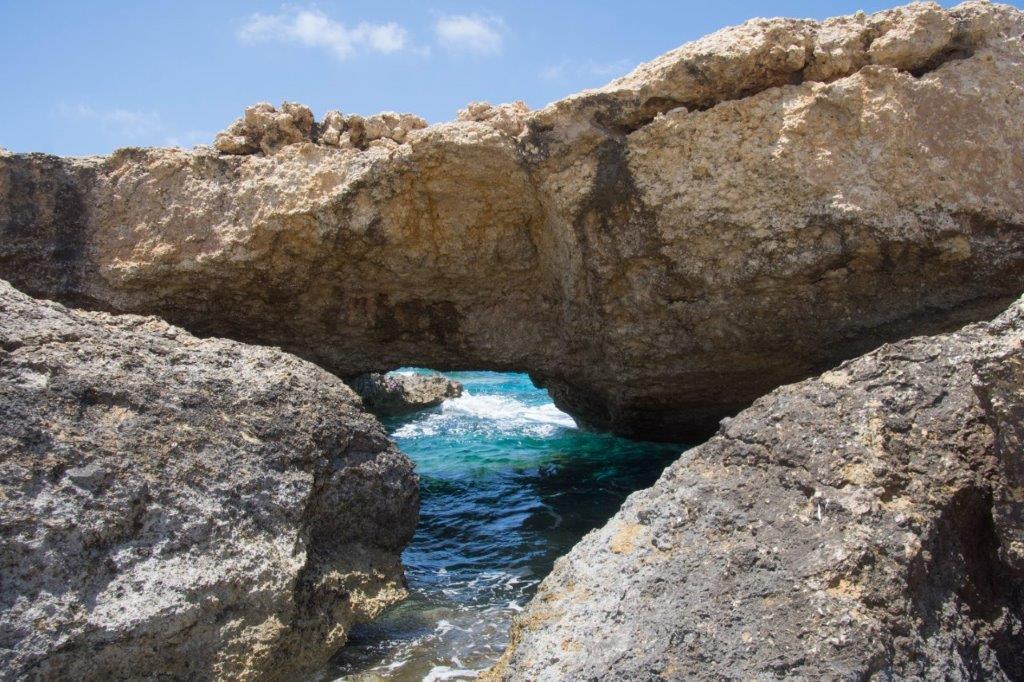
I decided to take a look up top. You can reach the top of the caves by climbing over massive boulders. Someone has helpfully painted arrows on the rocks to show you the easiest route up. Still, it was tricky climbing with the heavy Nikon.
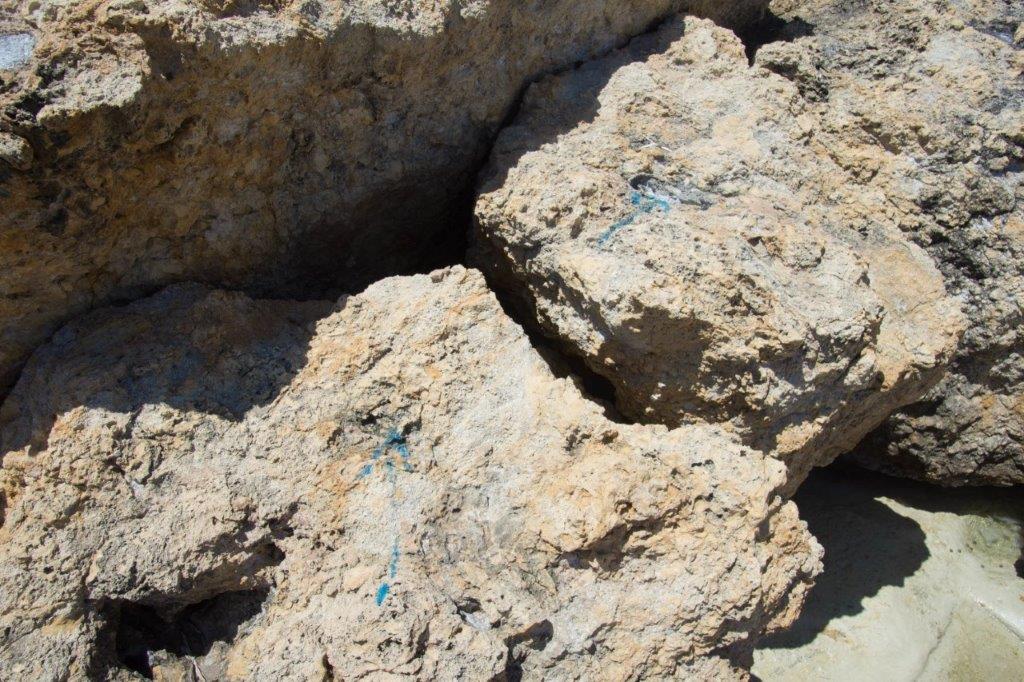
The top was covered with sharp, pitted rock that sloped steeply towards the sea. Salt-encrusted hollows gleamed white across the bizarre landscape.
And then I saw the cave skylight. Except it didn’t look natural at all. It looked very man-made. If so, who bored such a deep hole in the rock? And why?
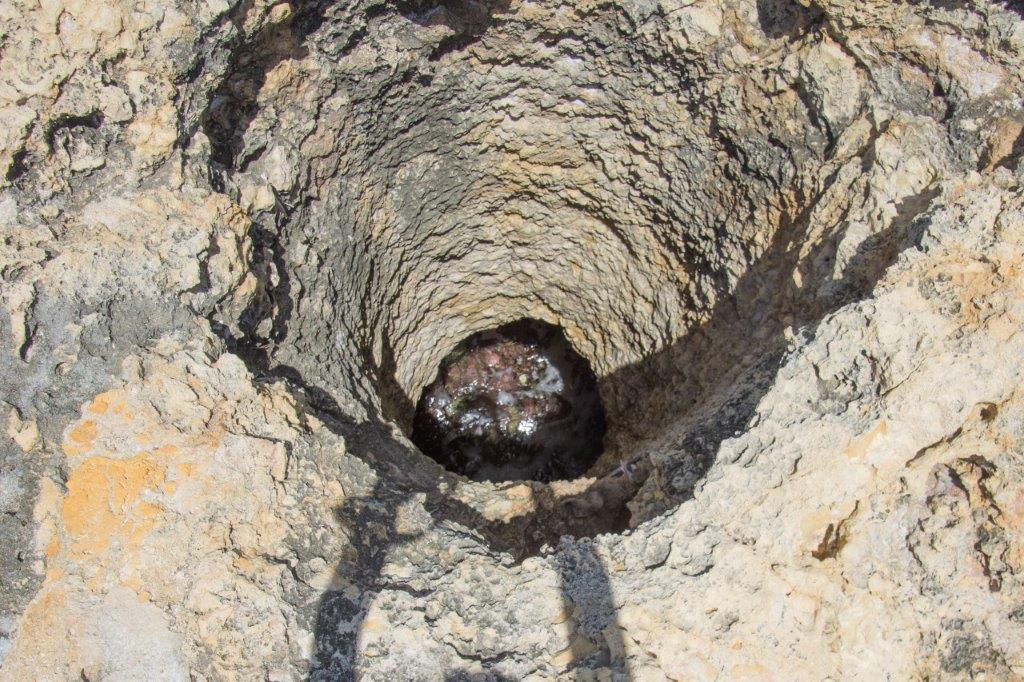
The top of this humongous rock offered great views over our ‘secret cove.’ I loved this place. This was hands down our favourite part of Cape Drepanum.
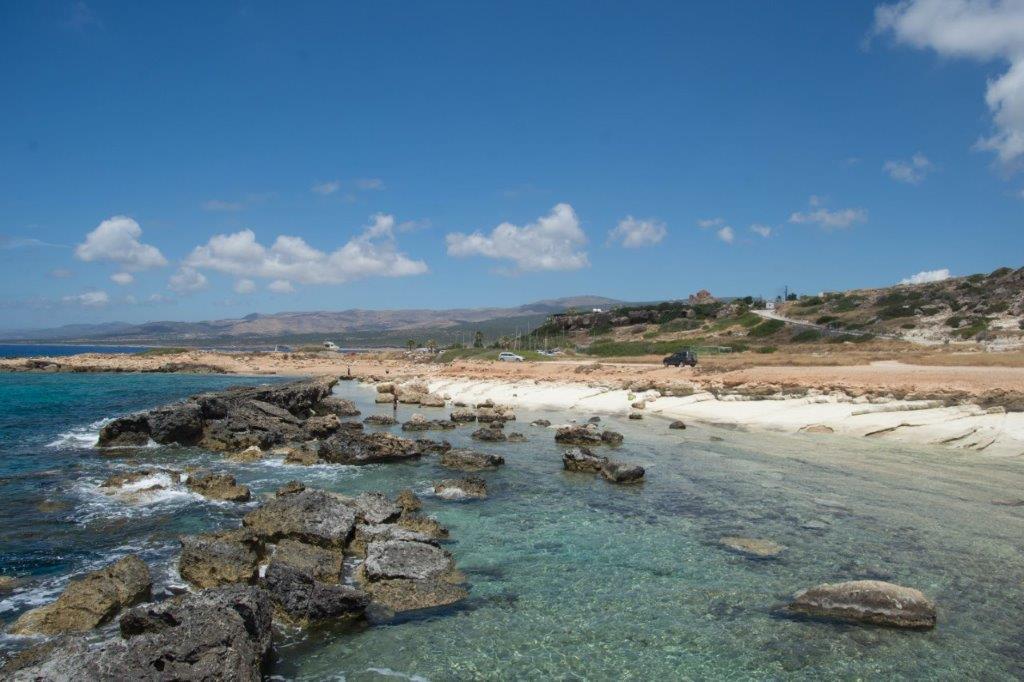
But we hadn’t finished quite yet. After climbing down from the rock, I met Matt who cheerfully stepped out of the cave window. He then disappeared and reappeared from the far end of the cave complex a few minutes later. He’d only gone and swam/crawled through this intimidating, human-eating sea cave!
So of course, I had to do it too. I couldn’t look like a wuss.
While Goobie and Herc played nearby on the shore, I waded into the cave. You have to walk through a deep bit, but then you step up on to a ledge that takes you into the next chamber.
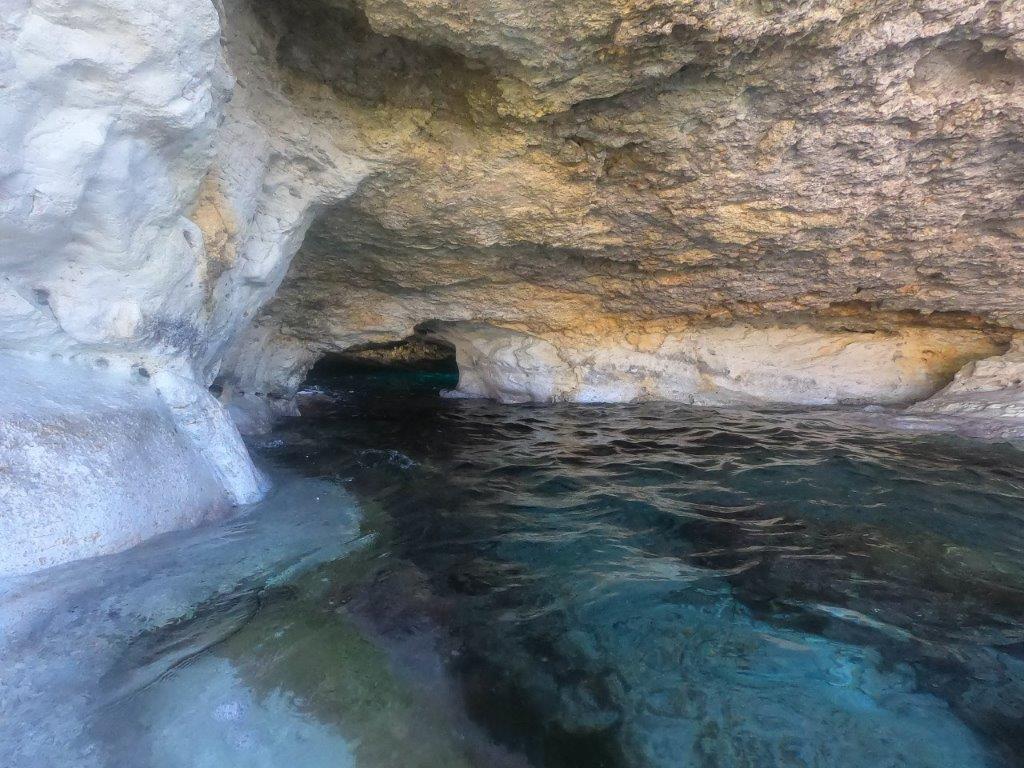
The first chamber was fine, the water fairly still. But the second chamber was the human-eating monster, spitting out waves to catch you and suck you into its blue gullet. The cavern was filled with a deafening roar as the waves pounded the walls. I was a tad – ahem – nervous .
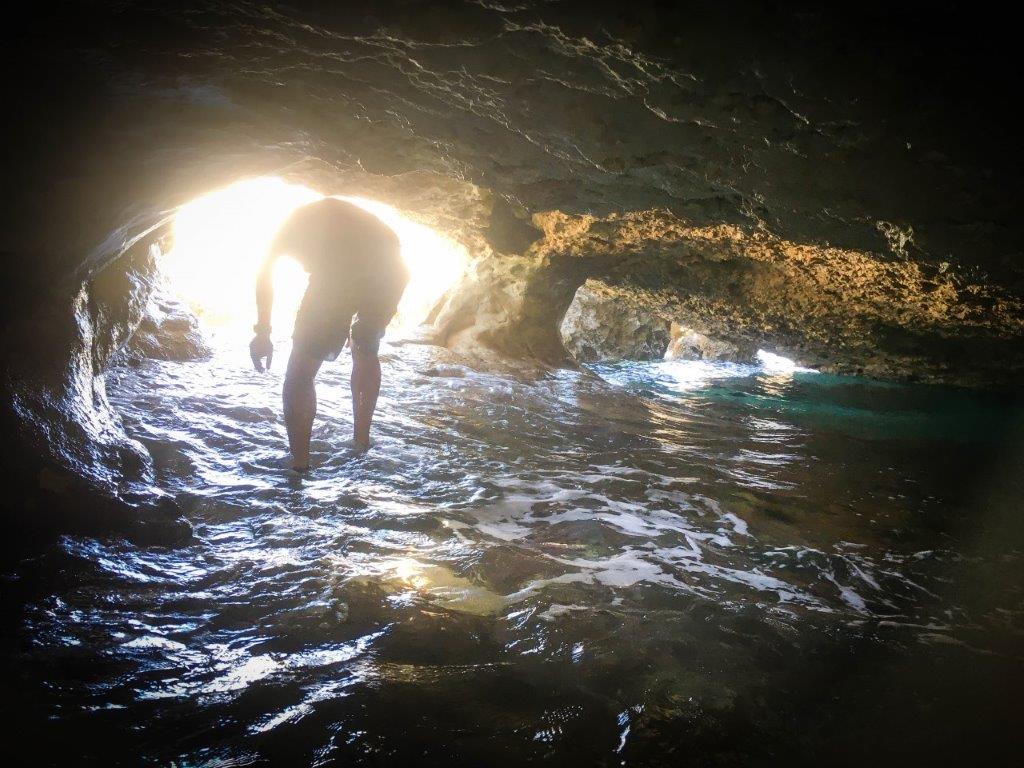
There was a ledge running along the outer wall of Monster Chamber, leading to the window. By walking along this ledge and making sure we didn’t slip, we managed to reach the window and climb out. No probs. Like most scary things, it was exhilarating.
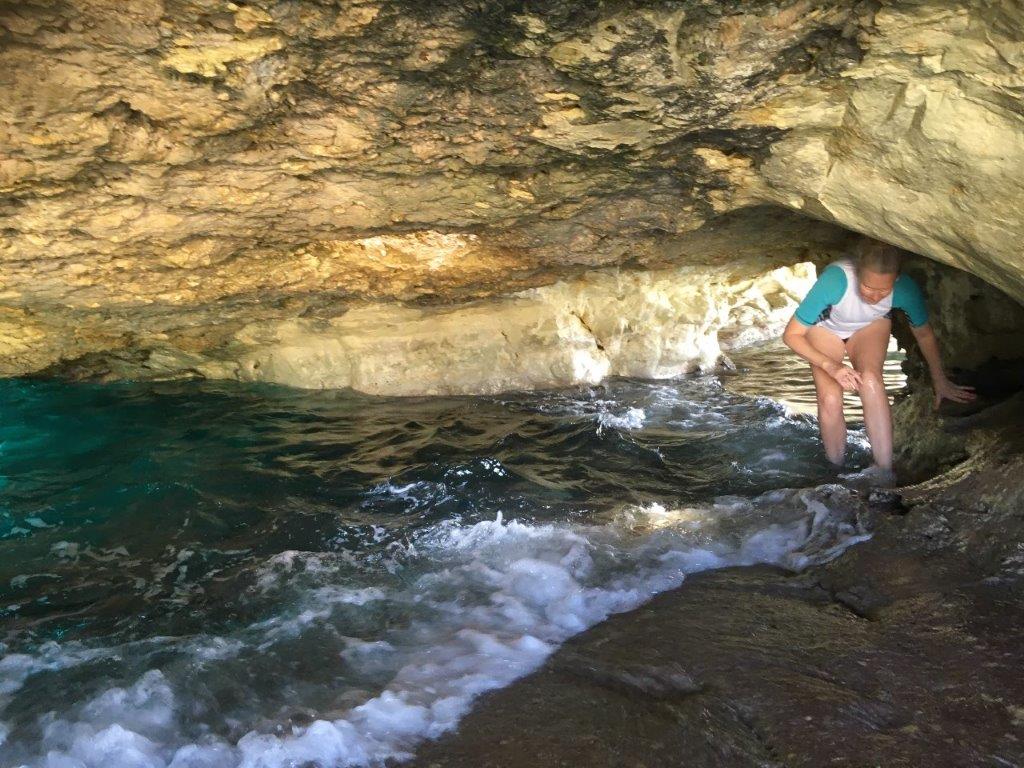
There were other chambers further along, but the ceiling was too low and the sea too rough to attempt to explore them.
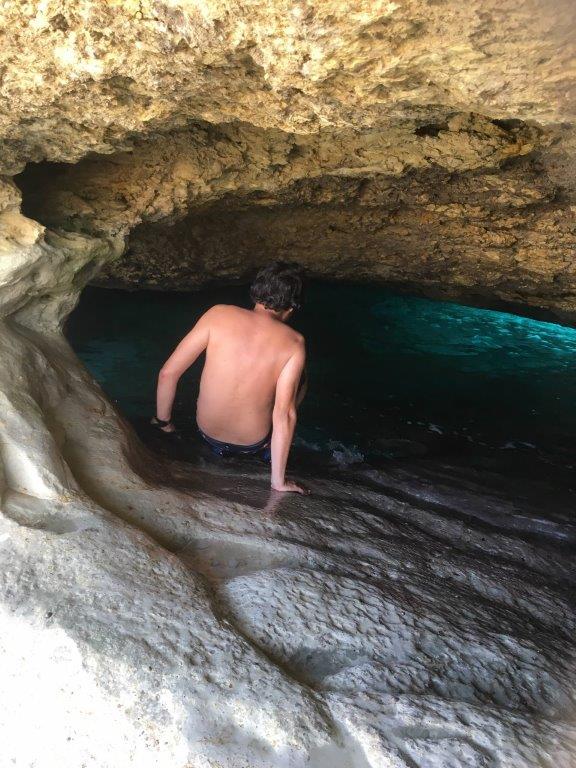
As we won’t be going abroad on holiday this summer, we are instead going to explore as many sea caves as we can find. Aren’t we Matt??! I’ve dubbed it ‘Sea Cave Summer’. And the Cape Drepanum sea caves was our first of the year – earlier than expected too.
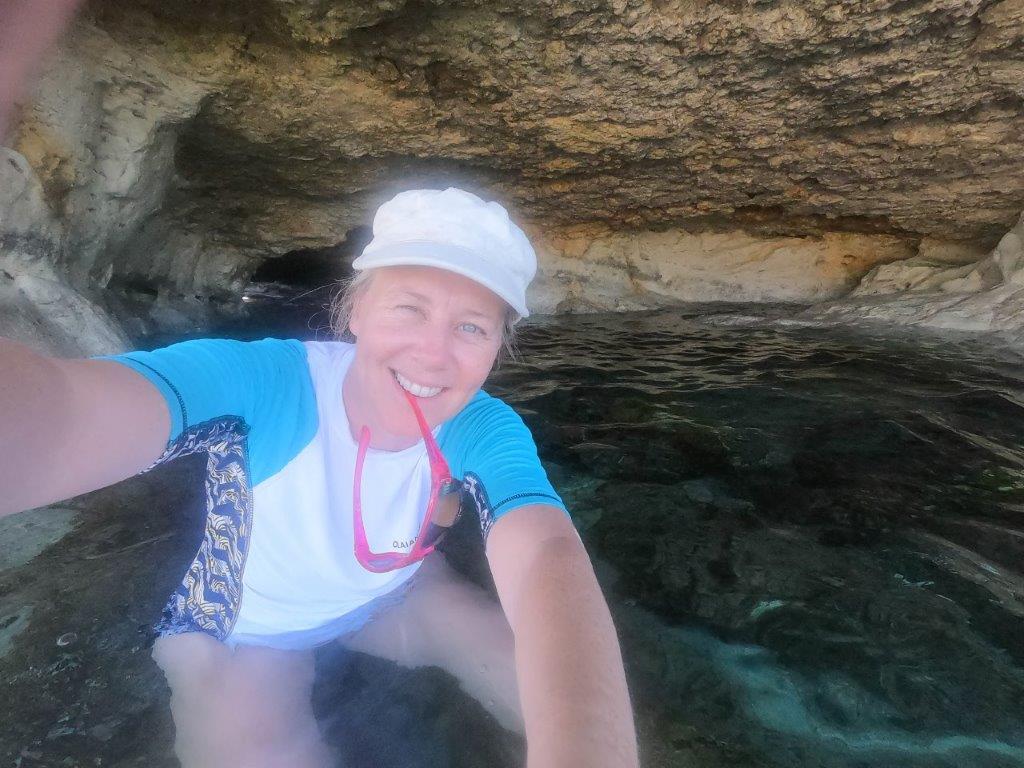
As we left Cape Drepanum for home, I was buzzing. This was a place that truly had something for everyone in our family. Tombs for me, sea caves for me and Matt, rock pools for Goobie and the perfect little toddler cove for Herc. We loved it.
Leave a Reply